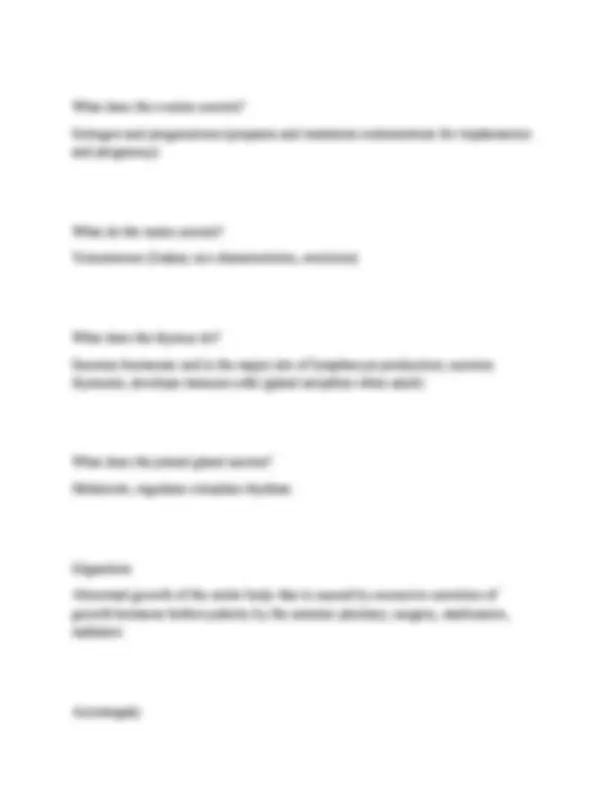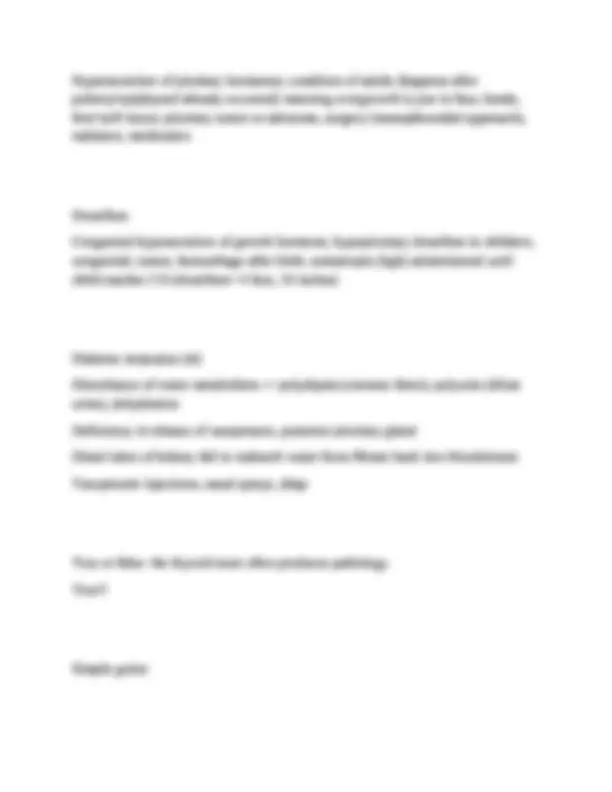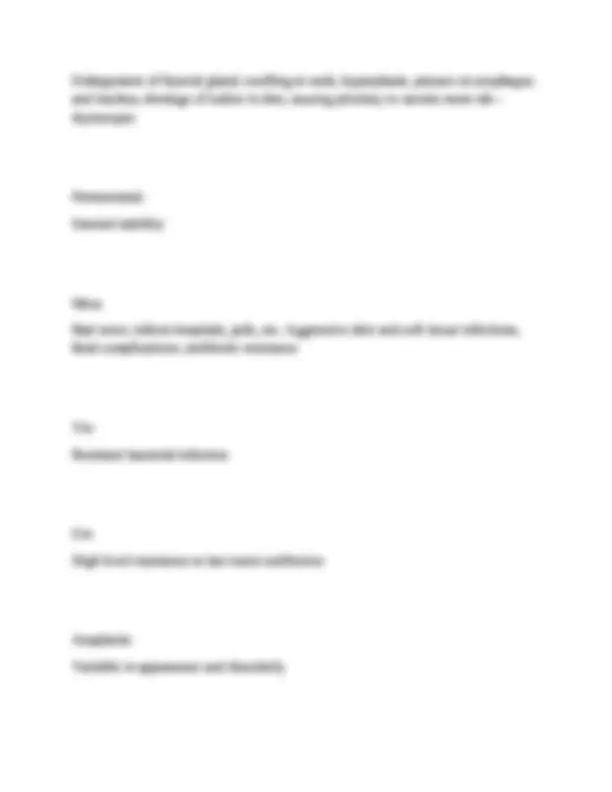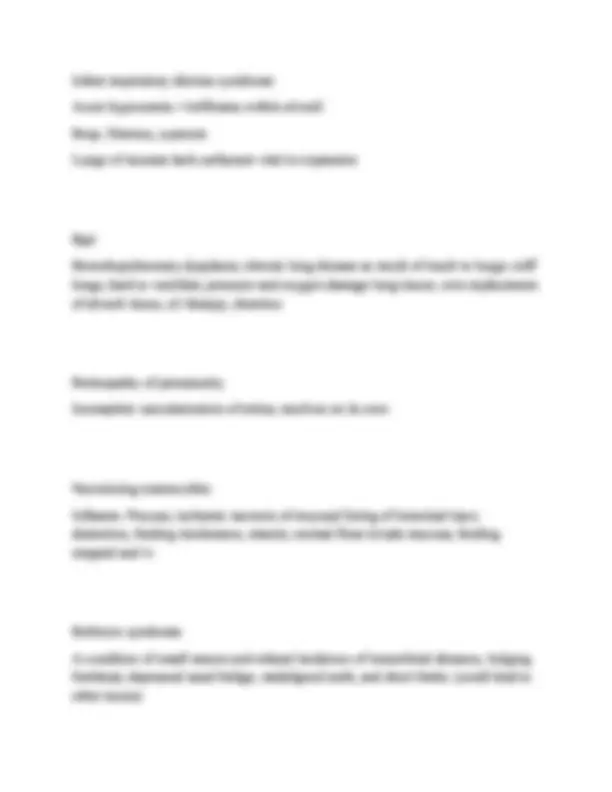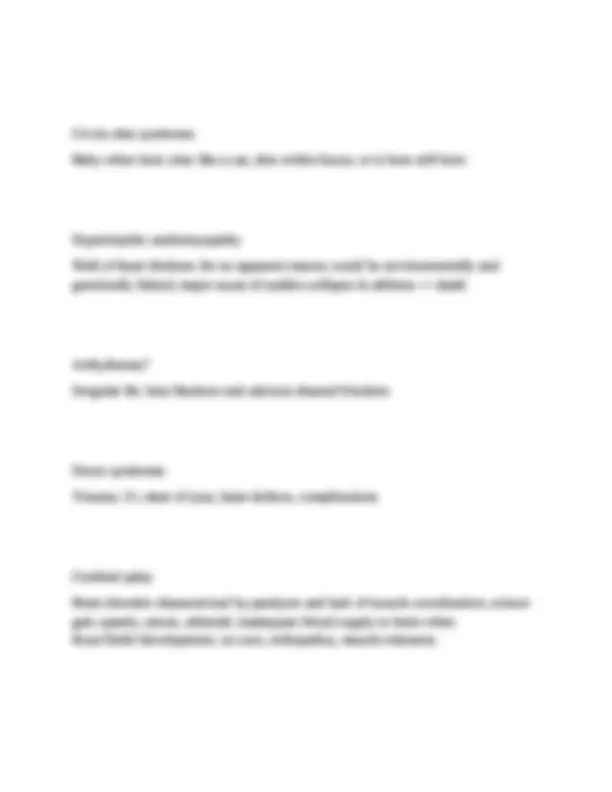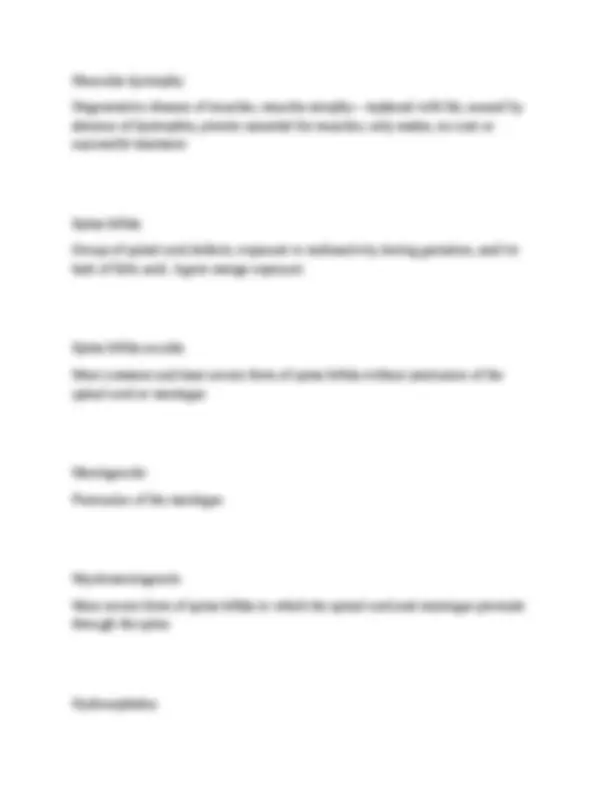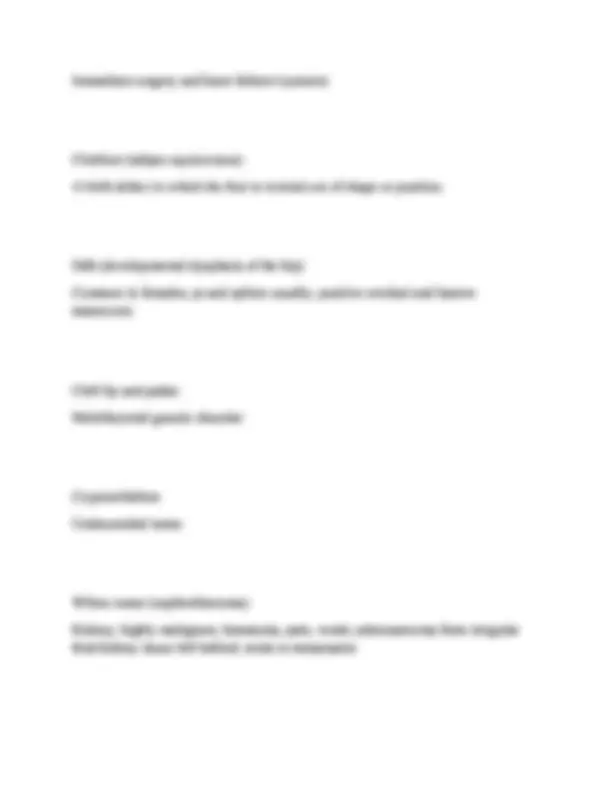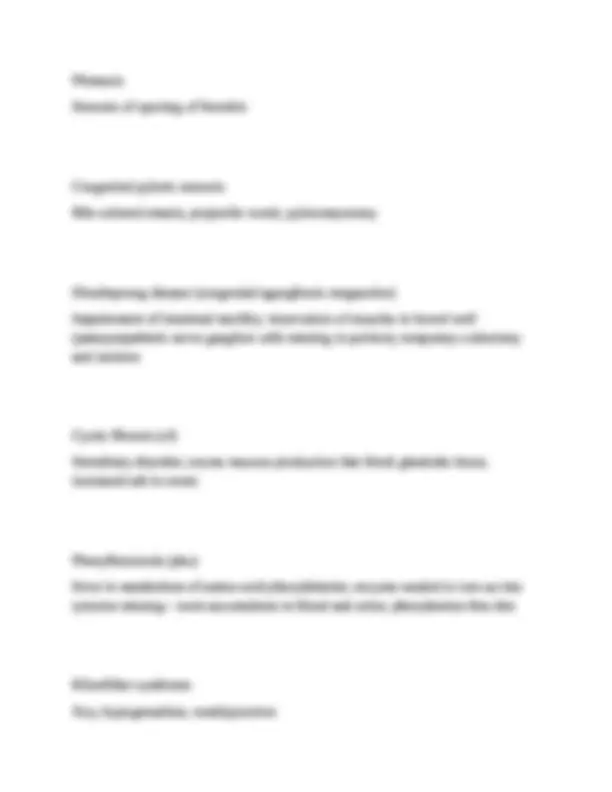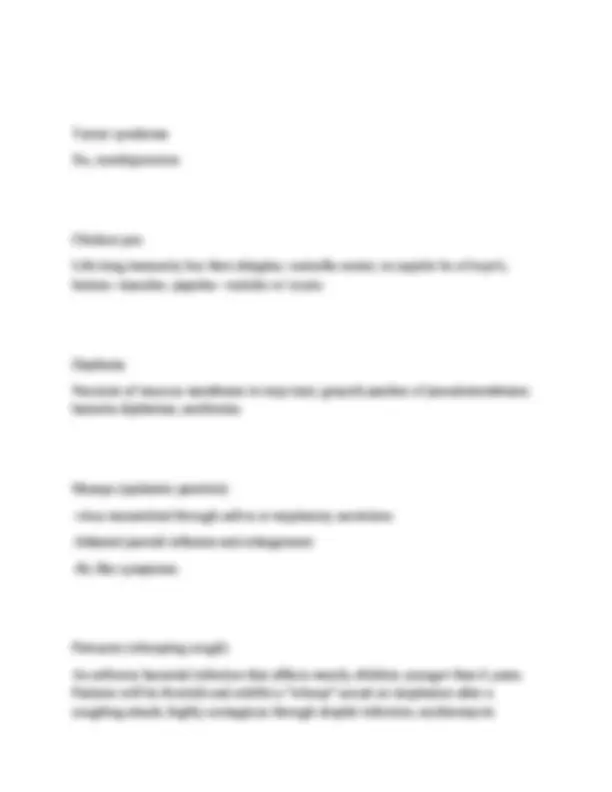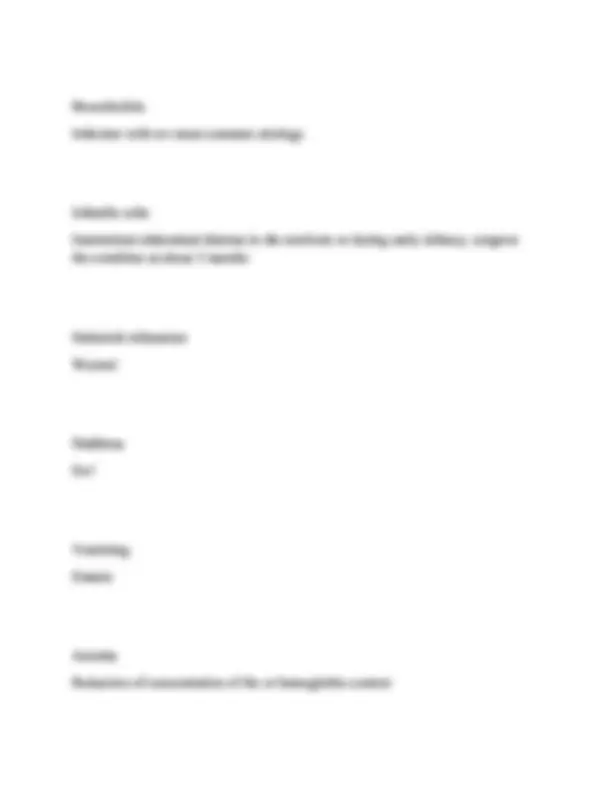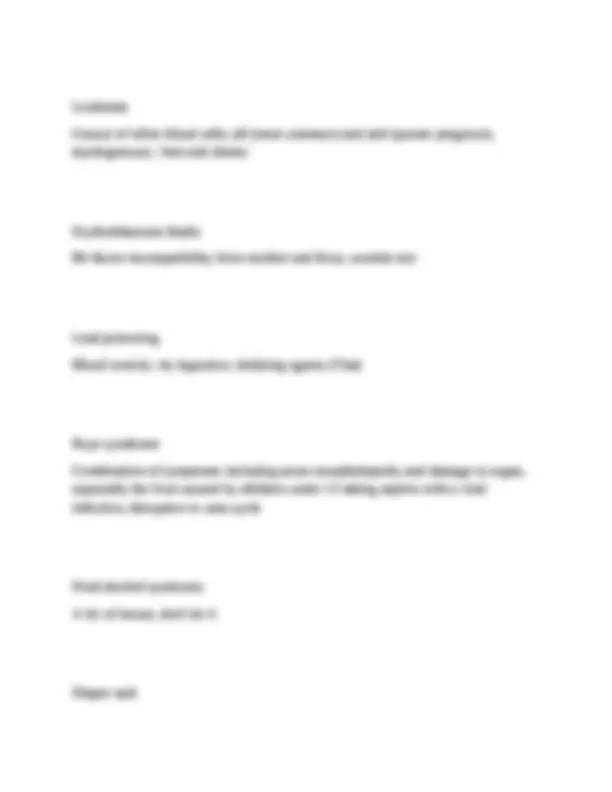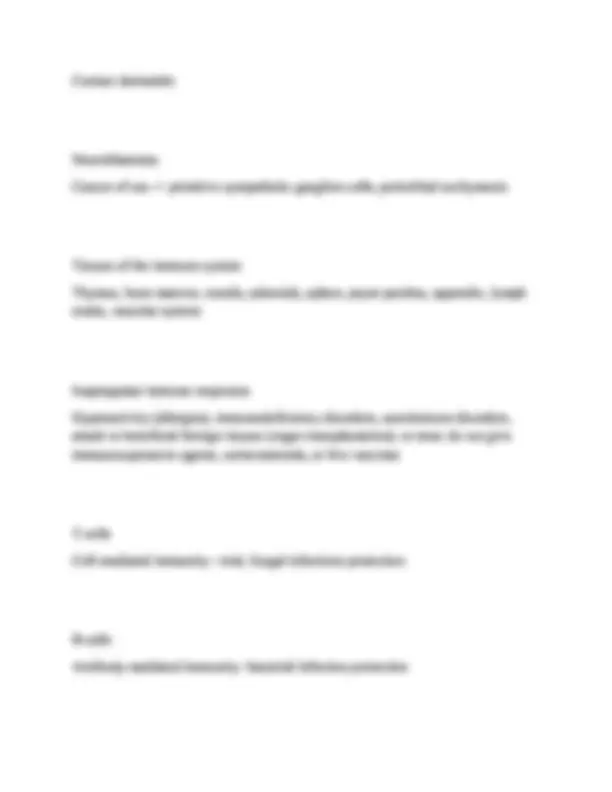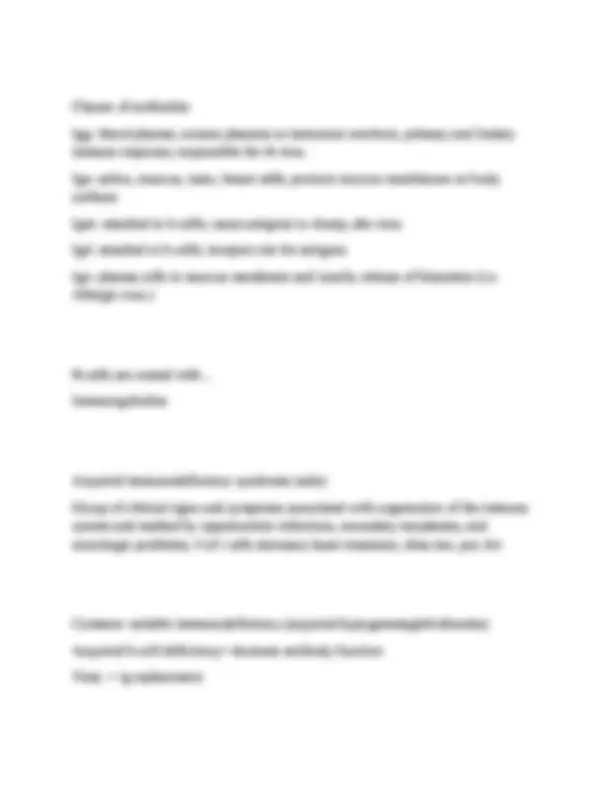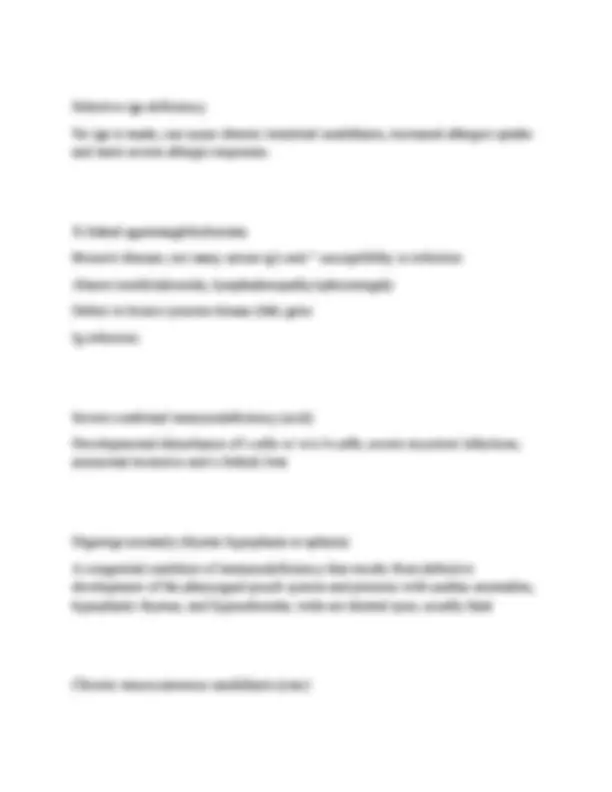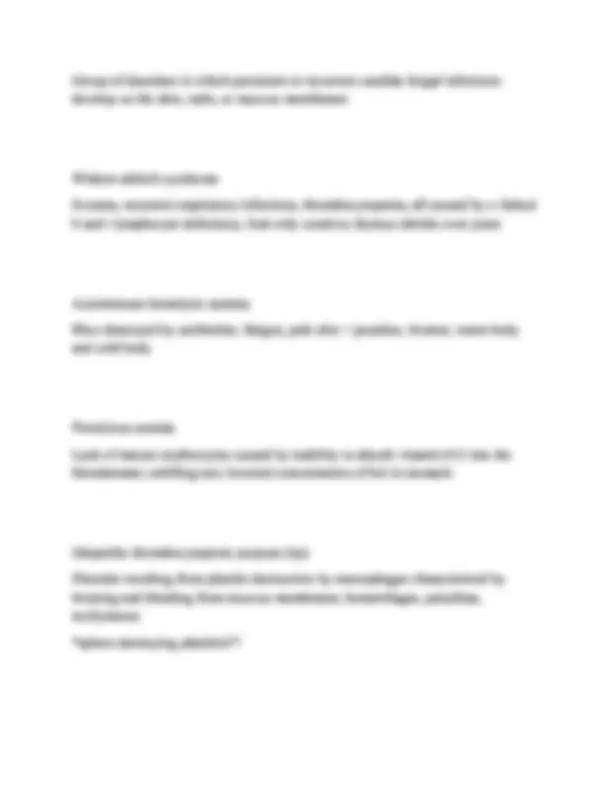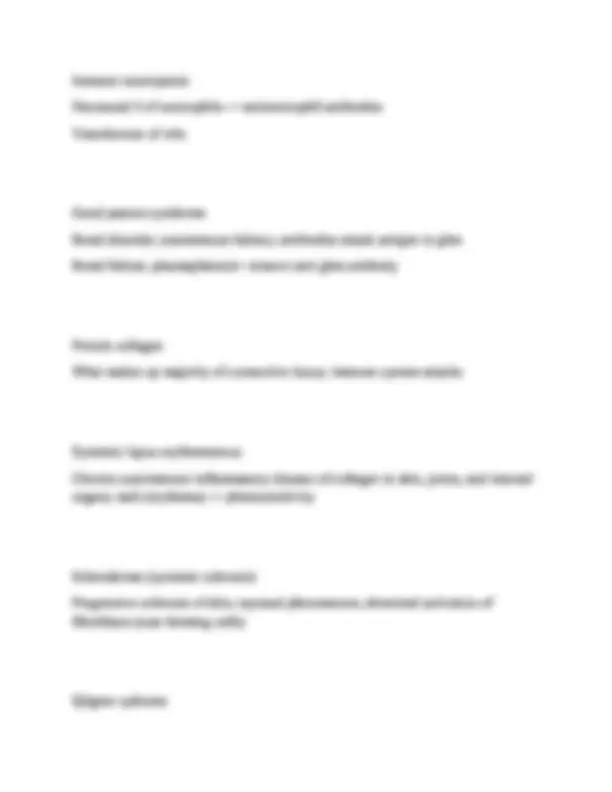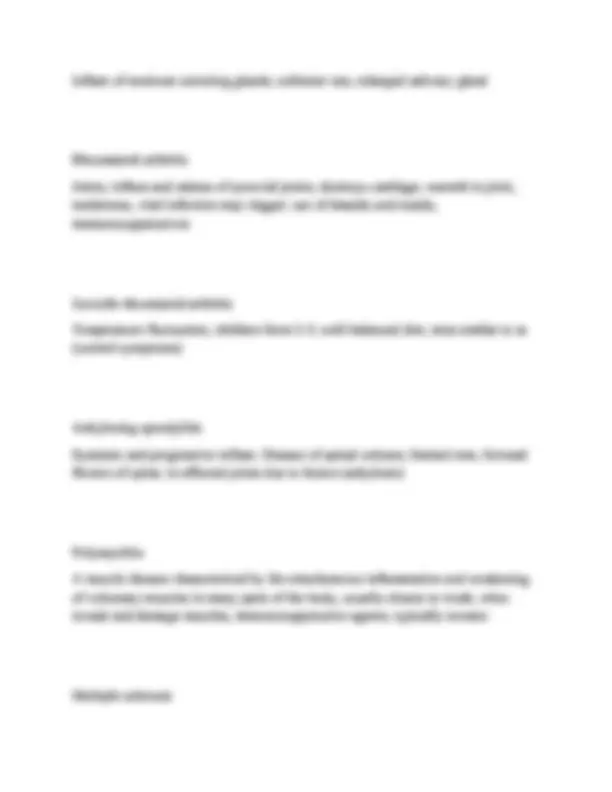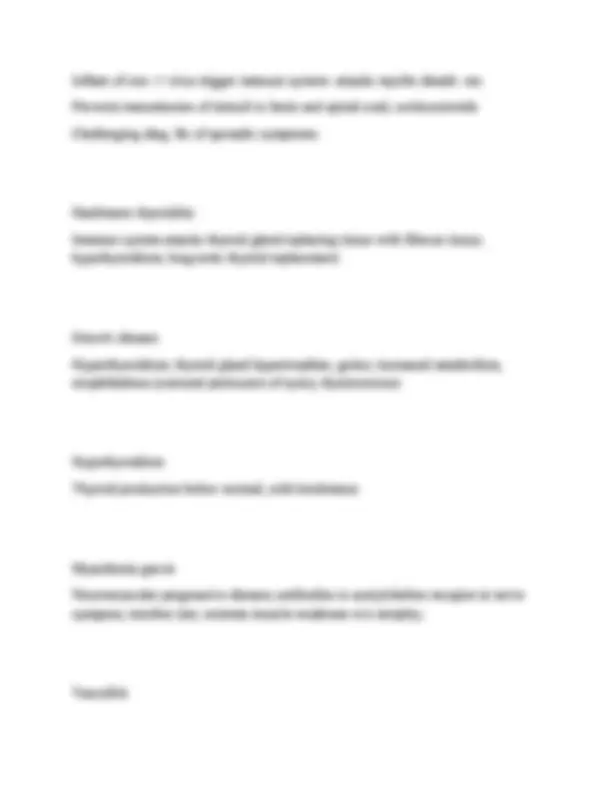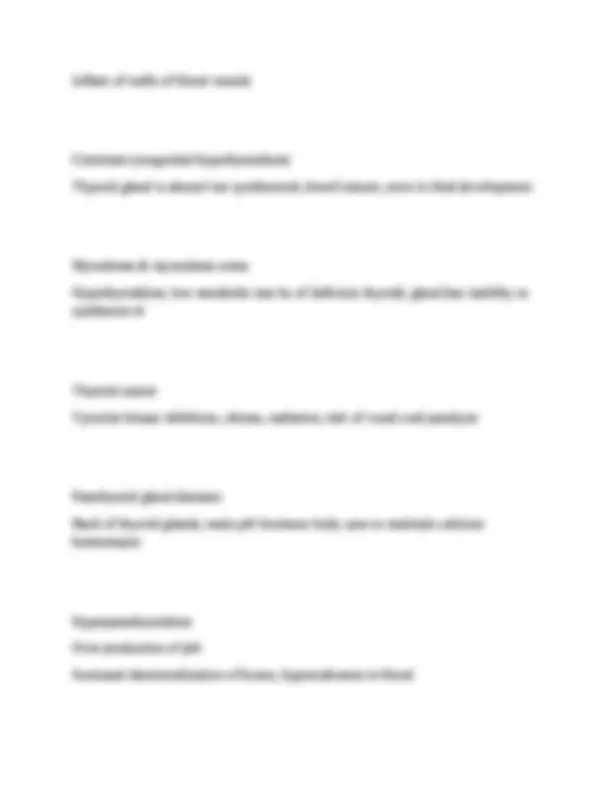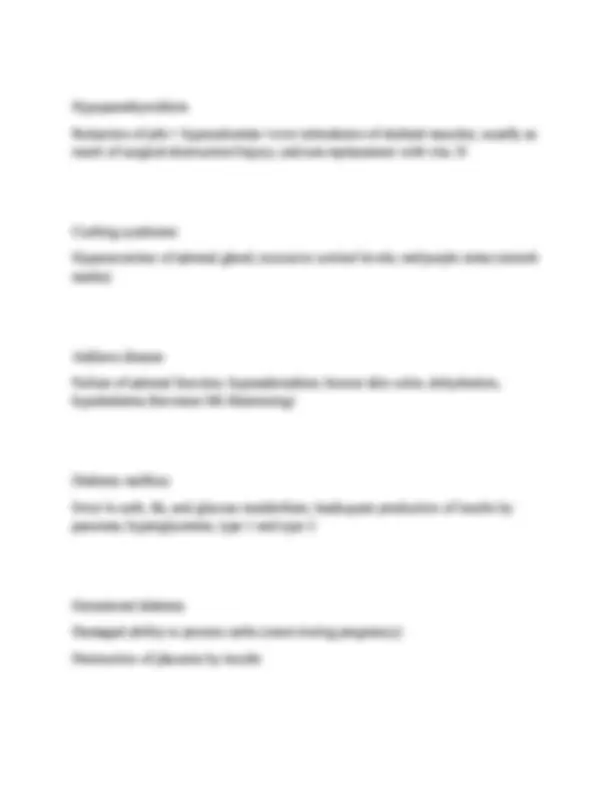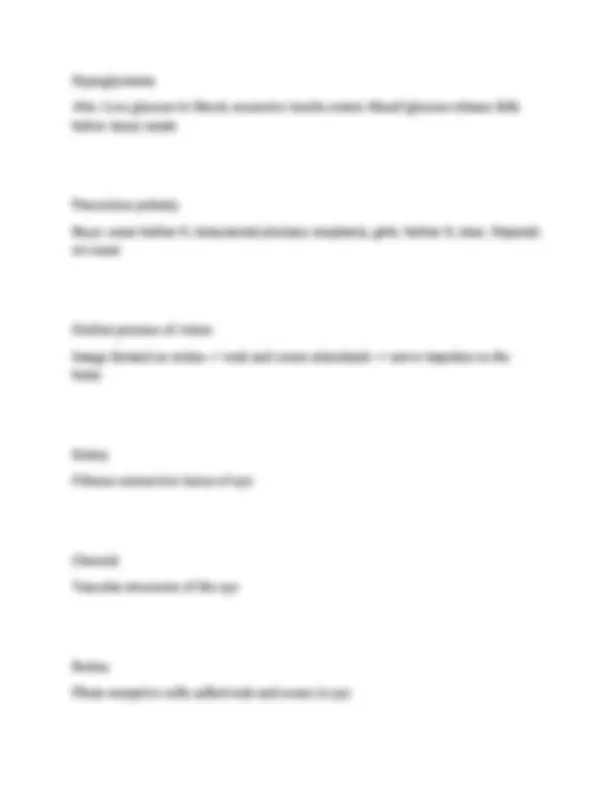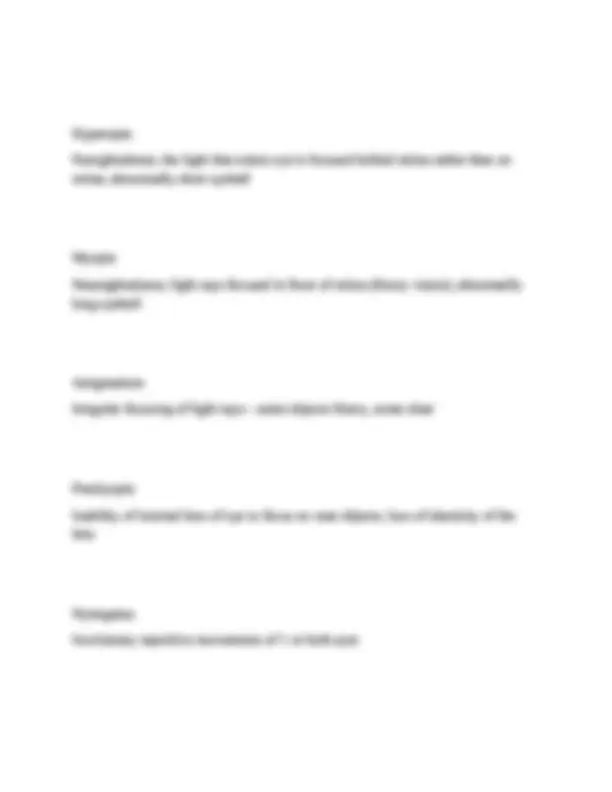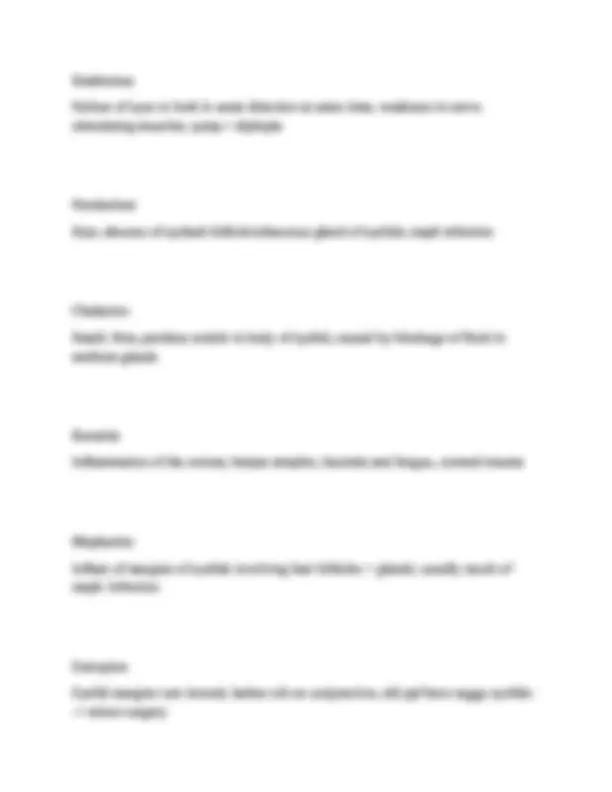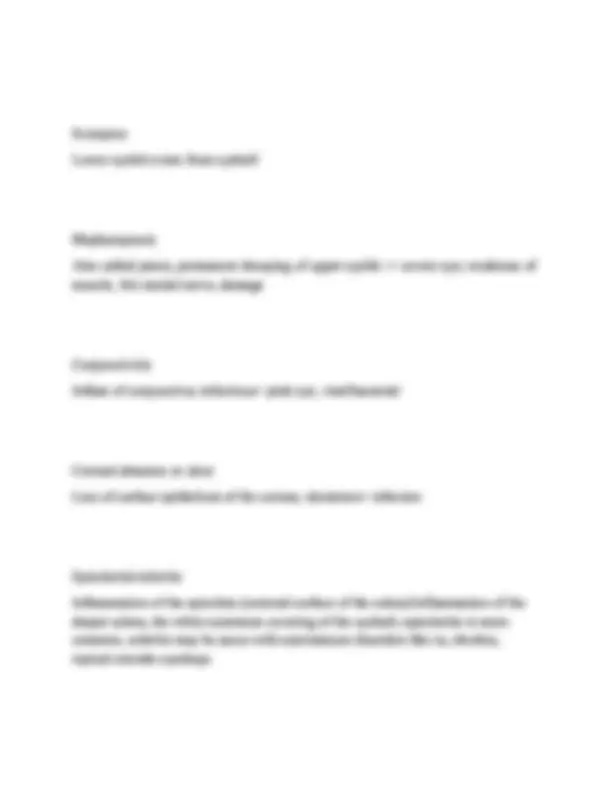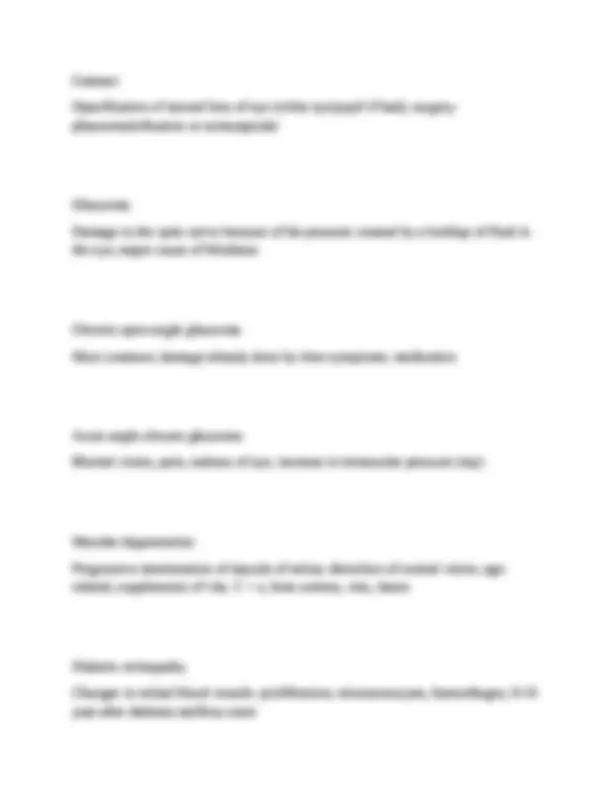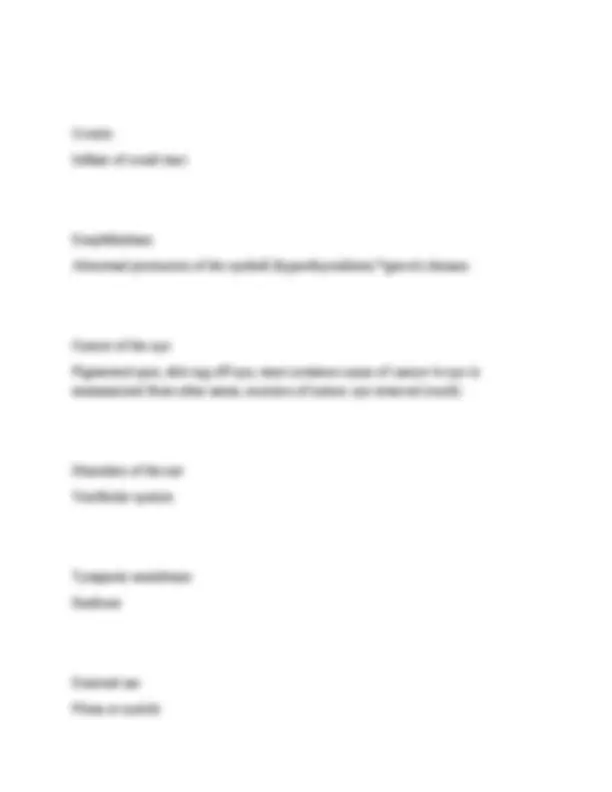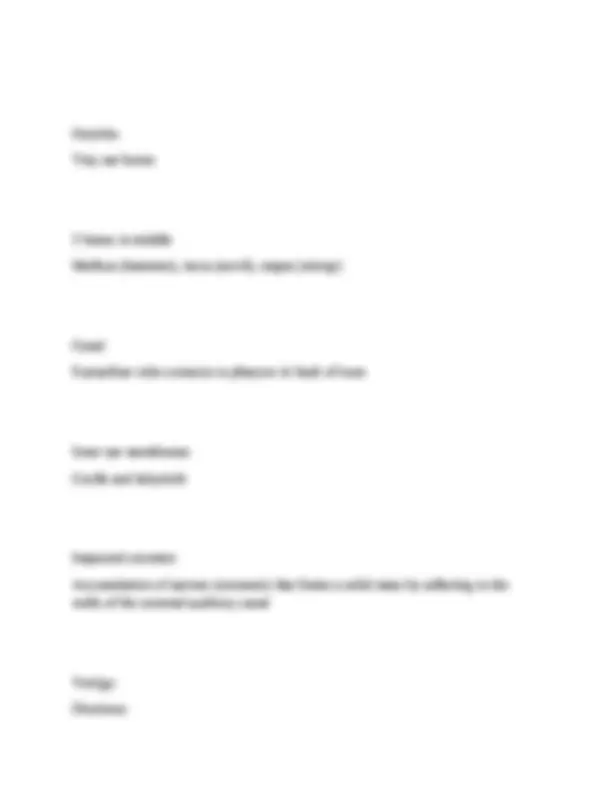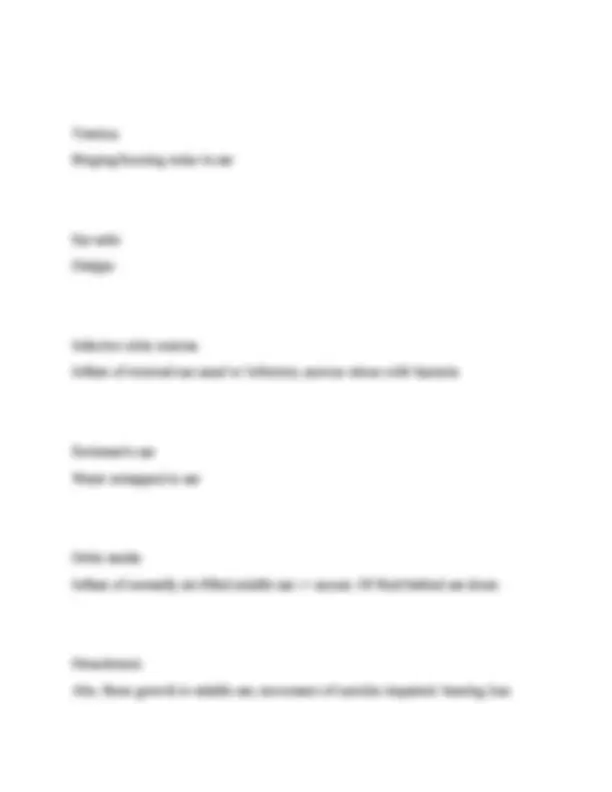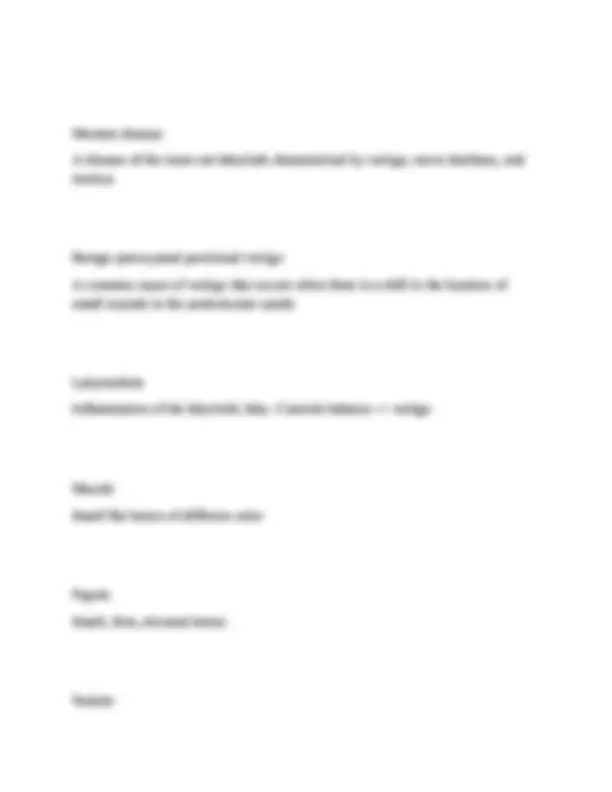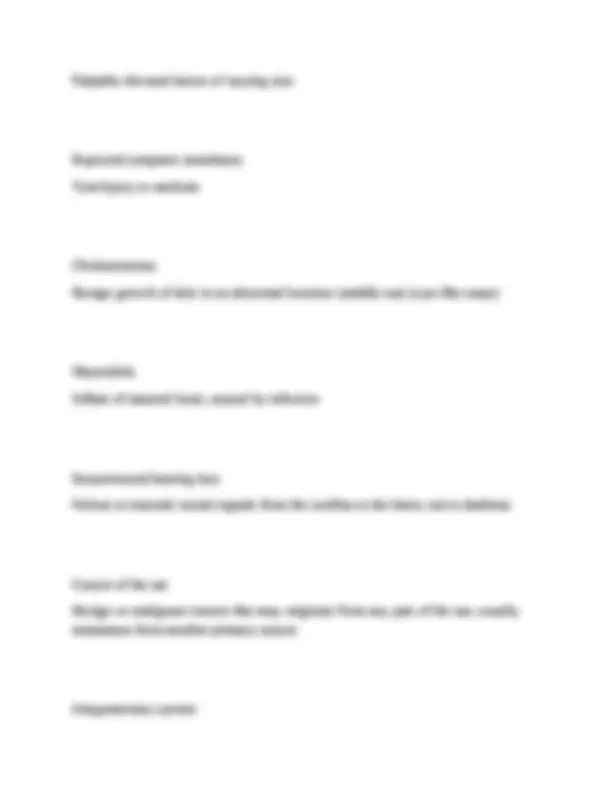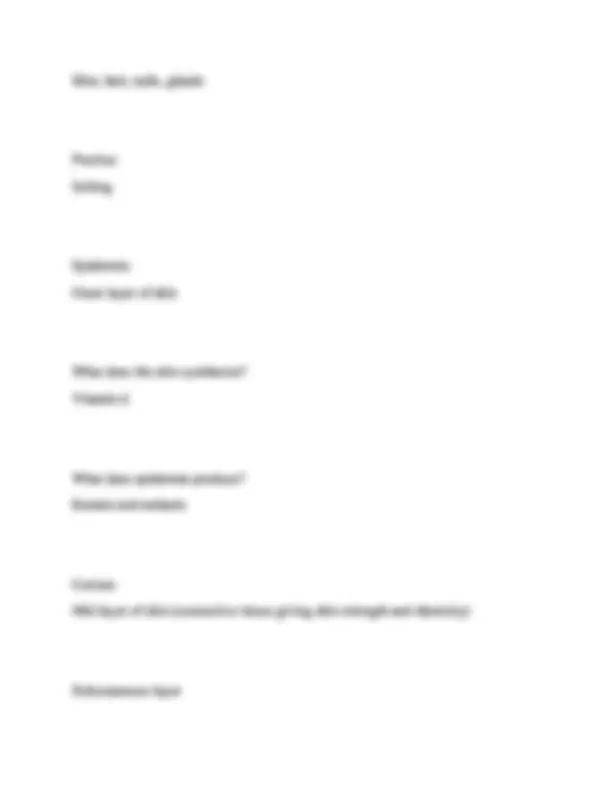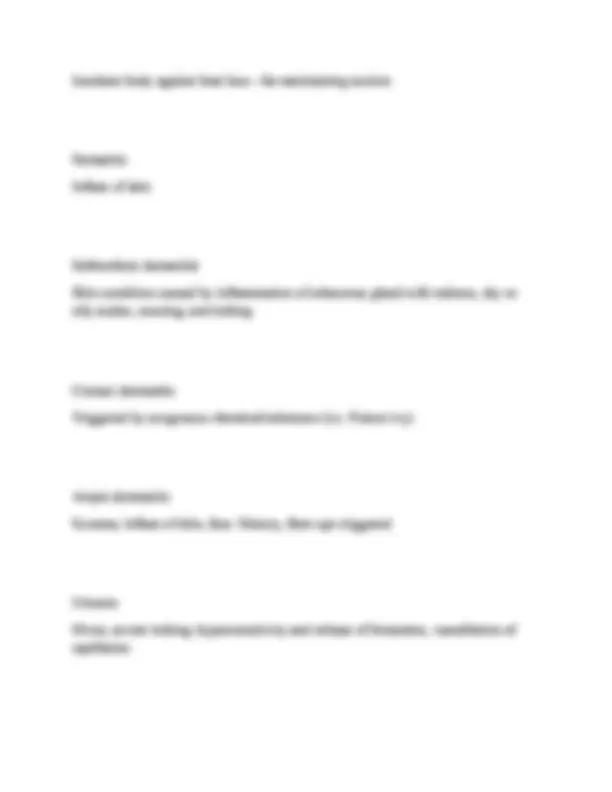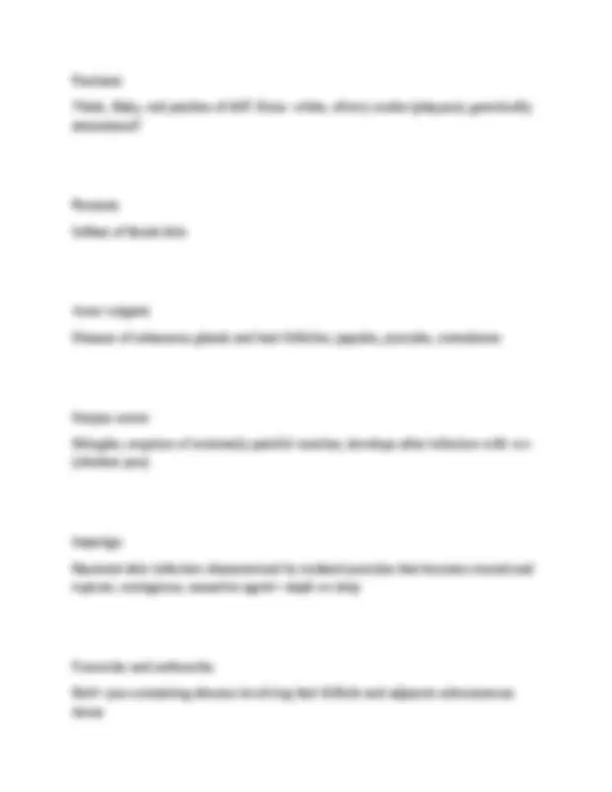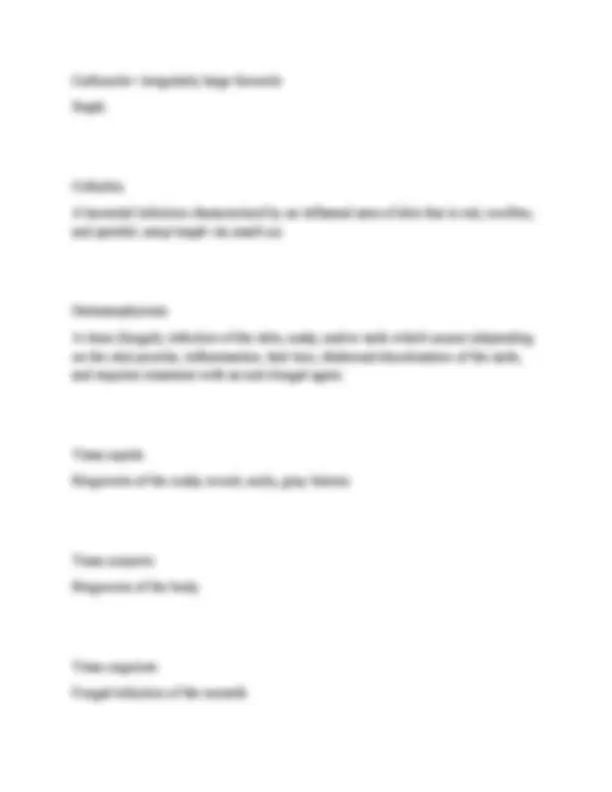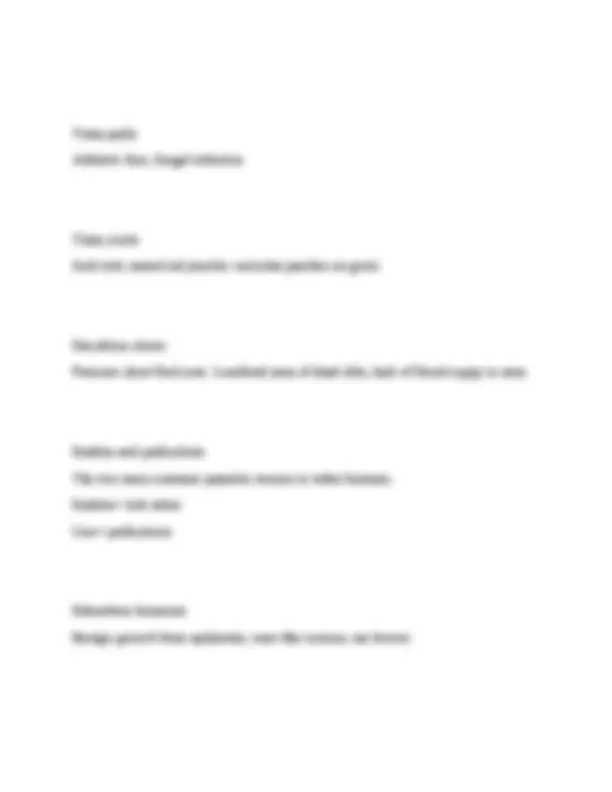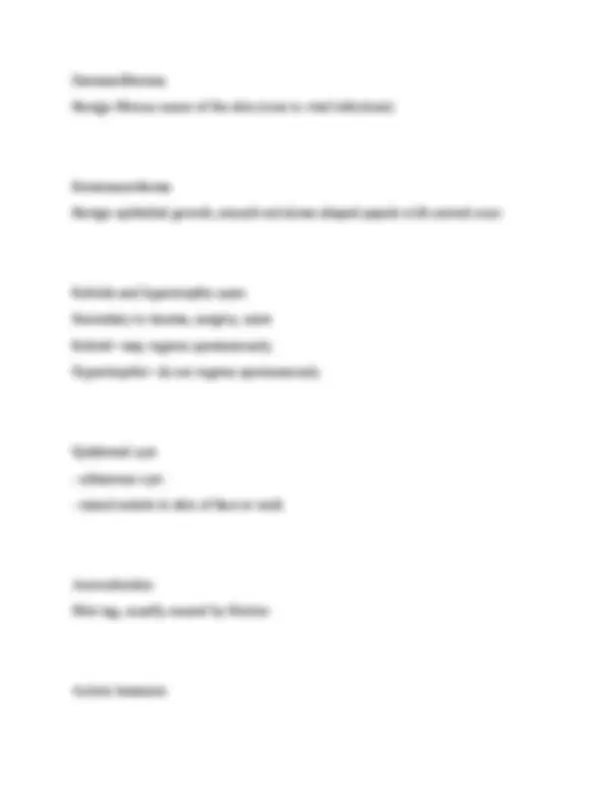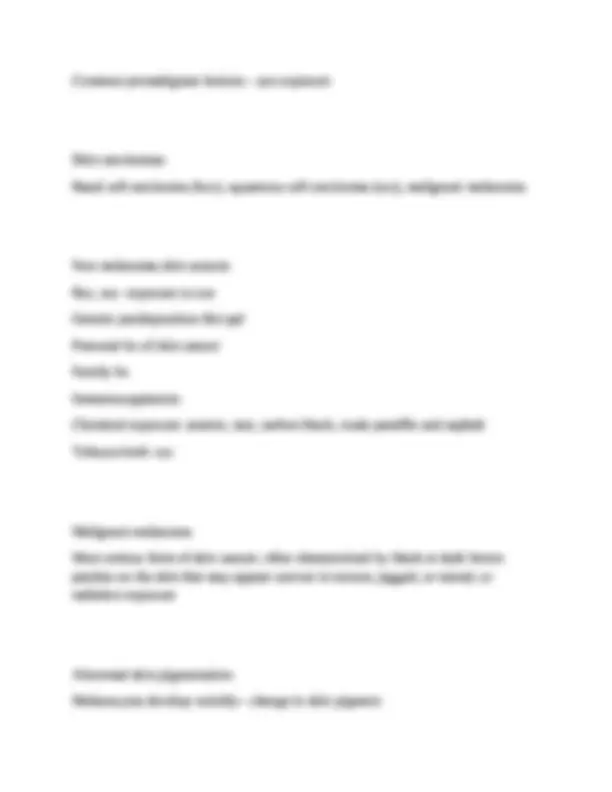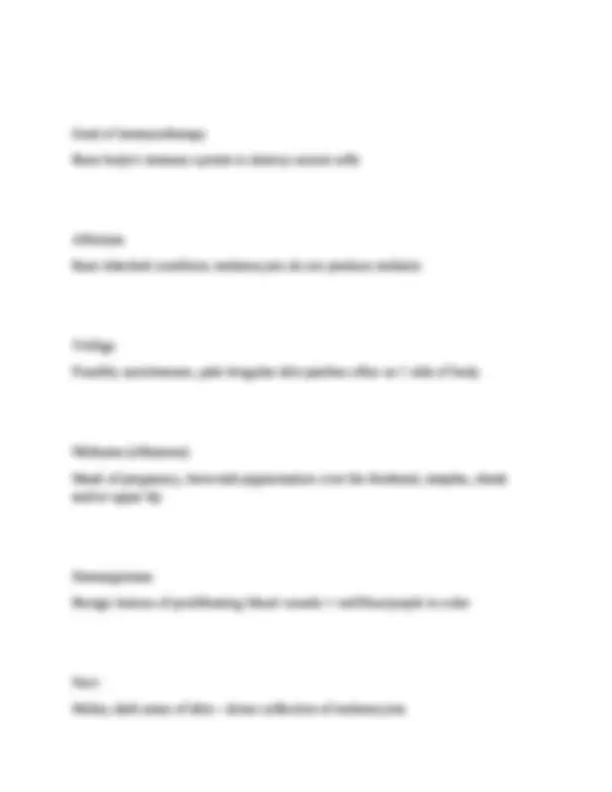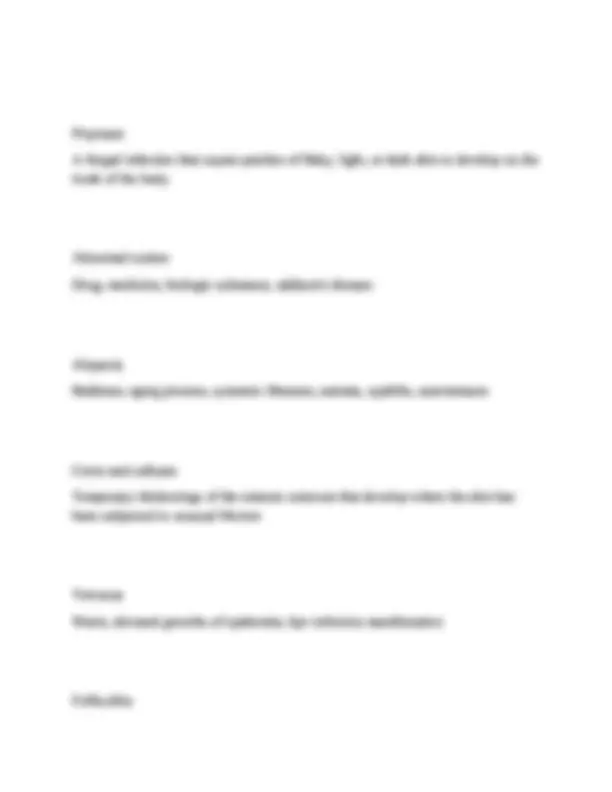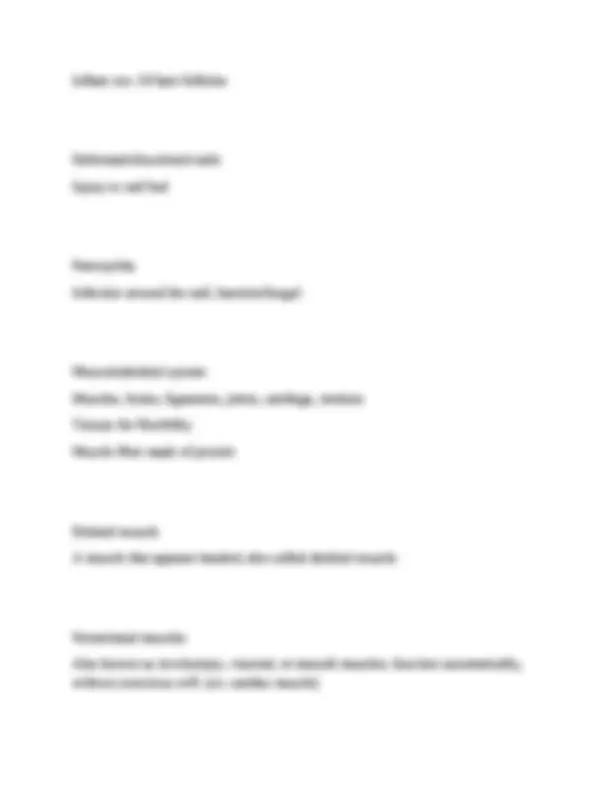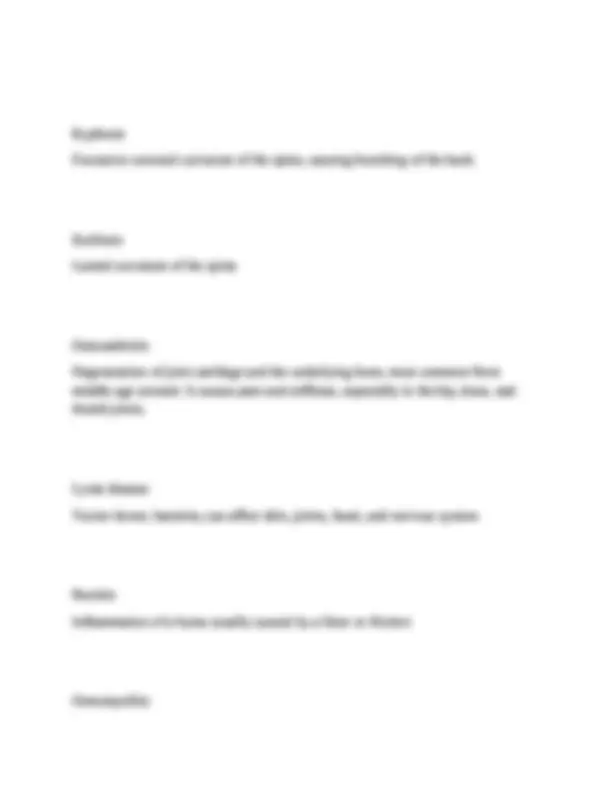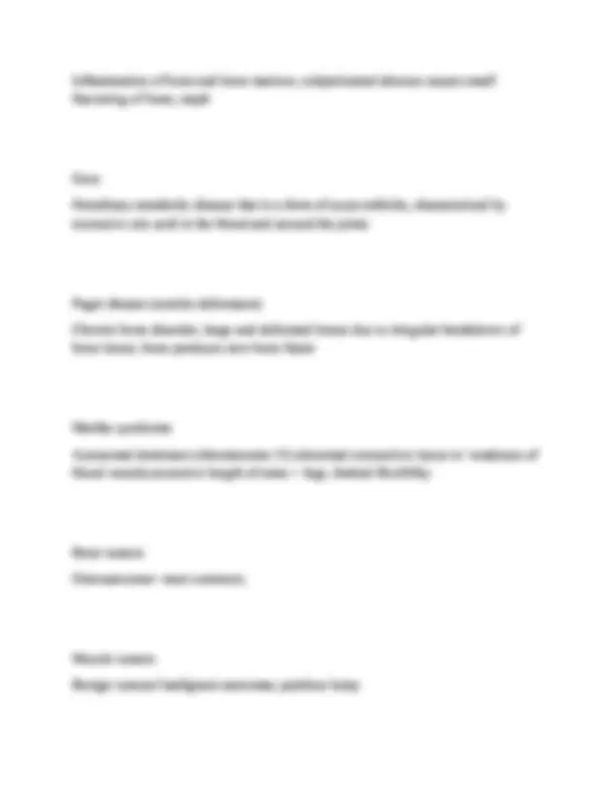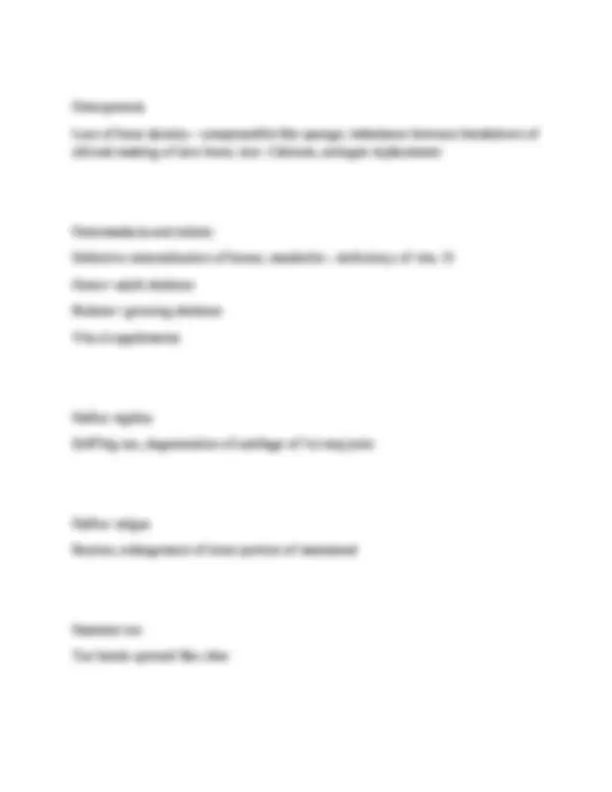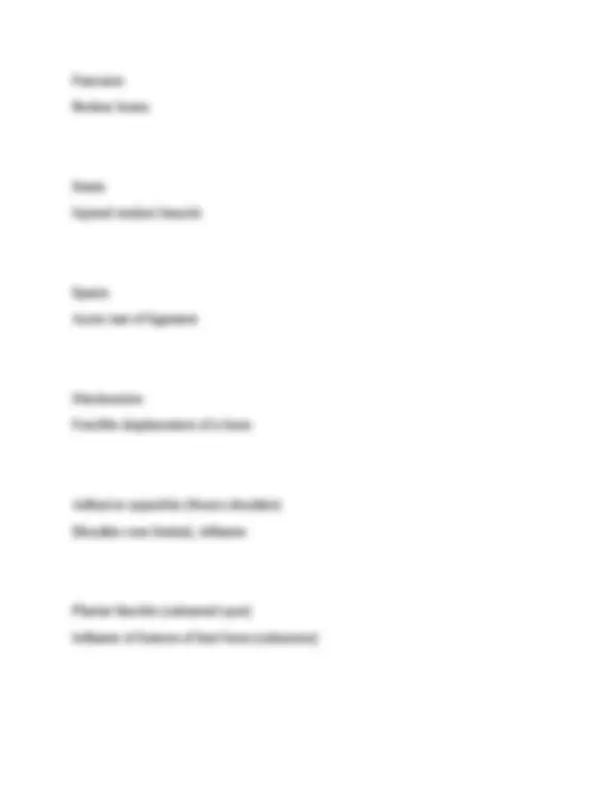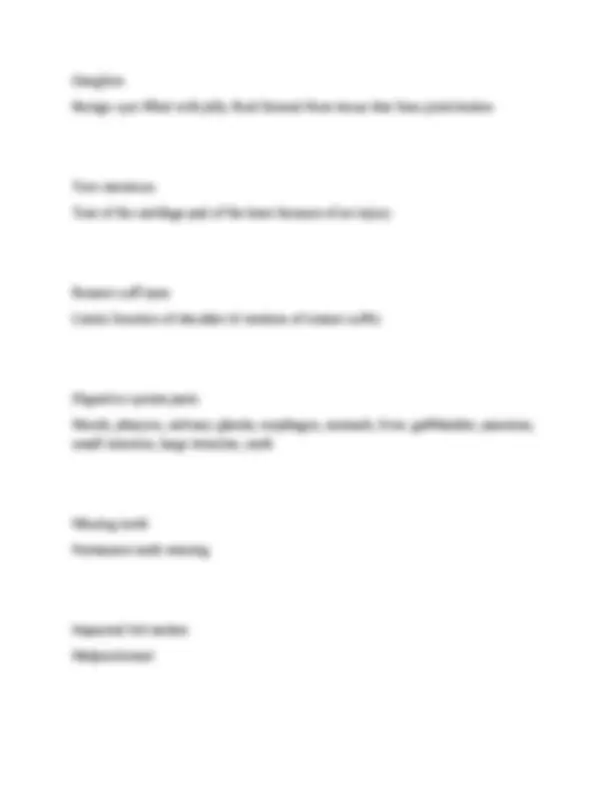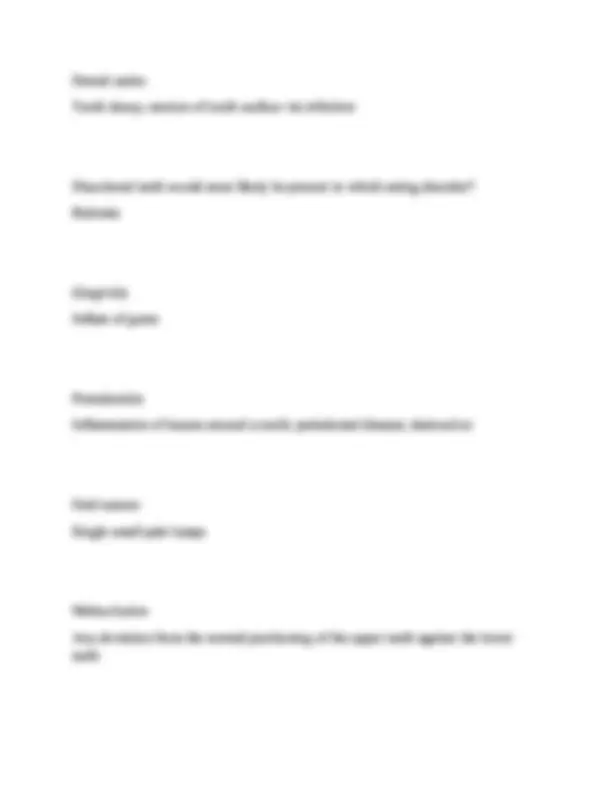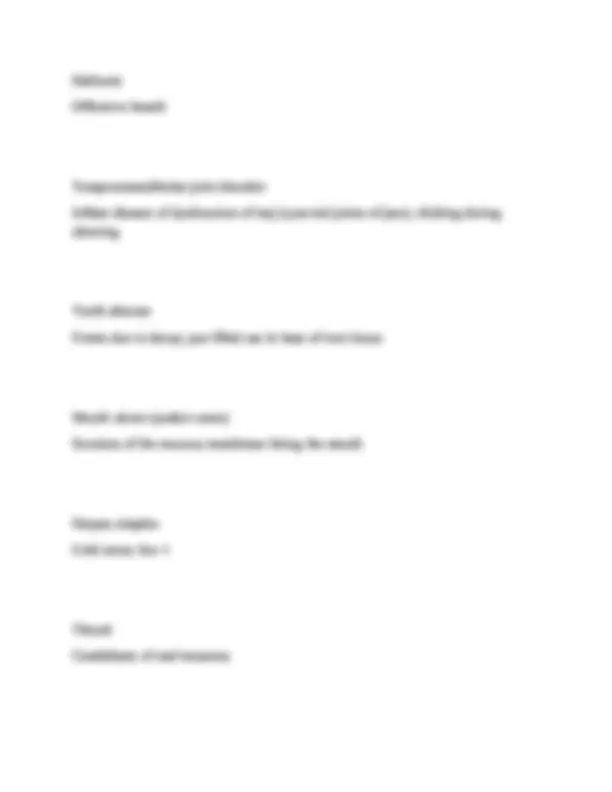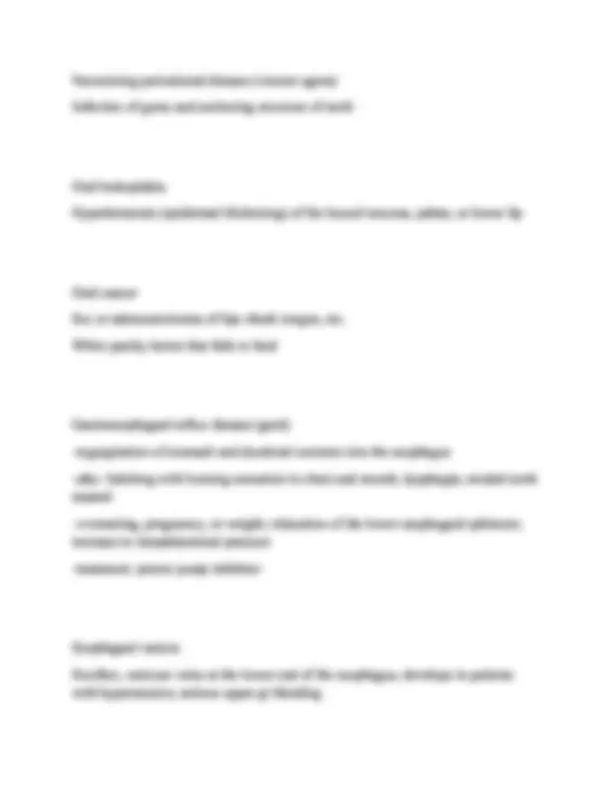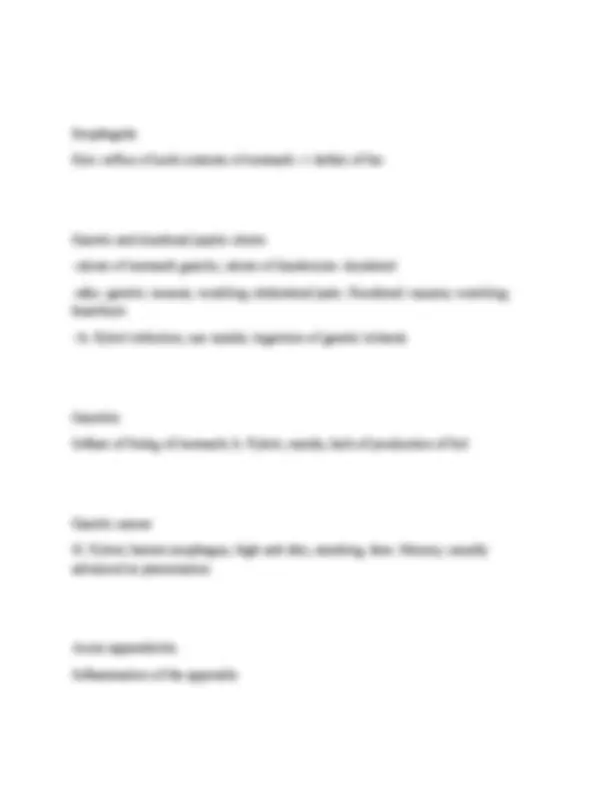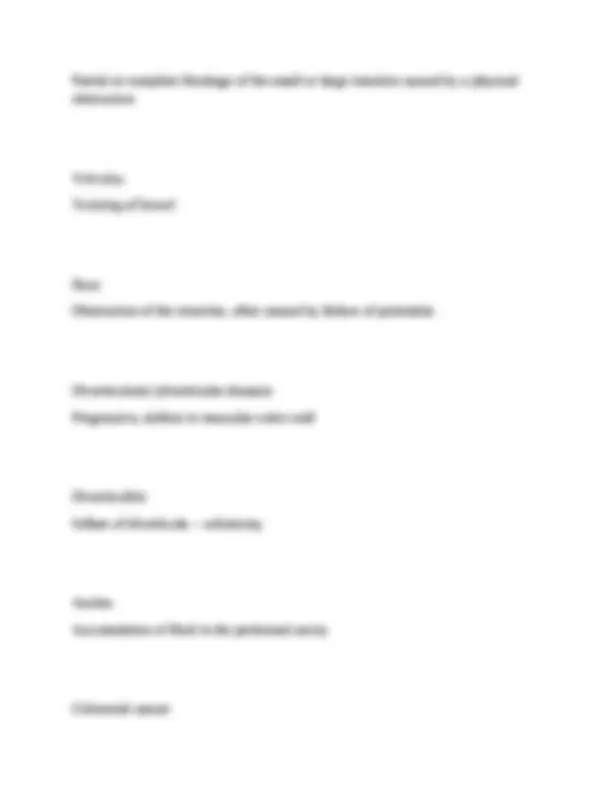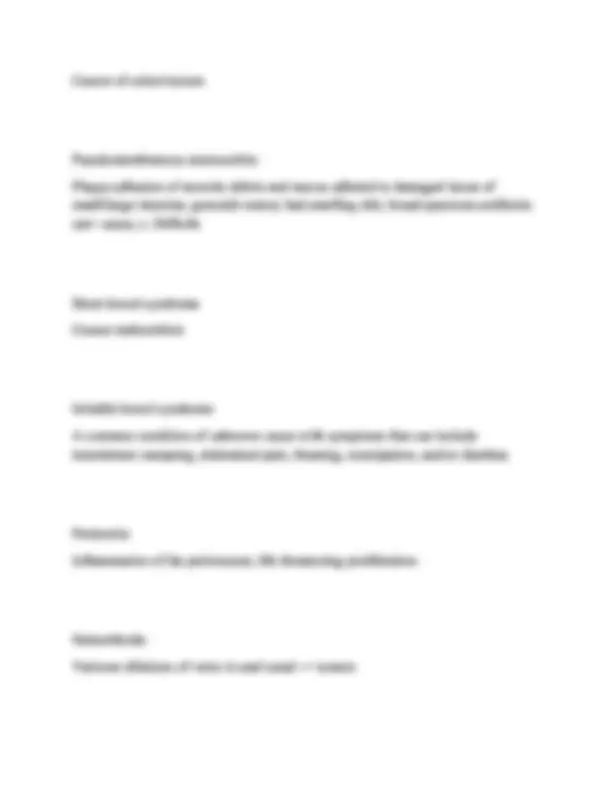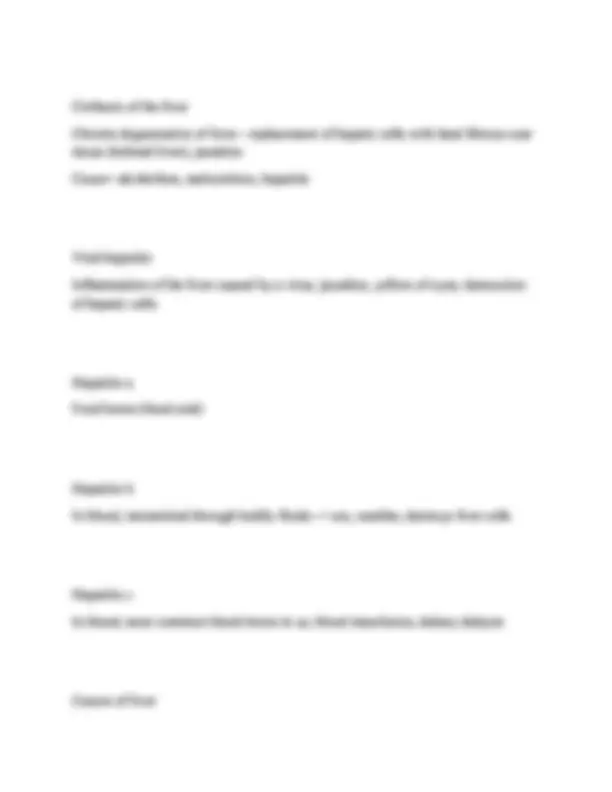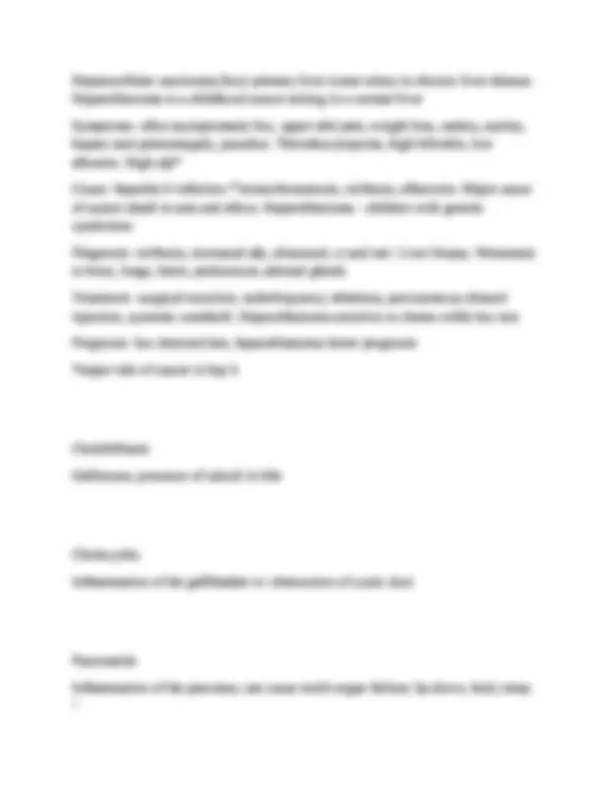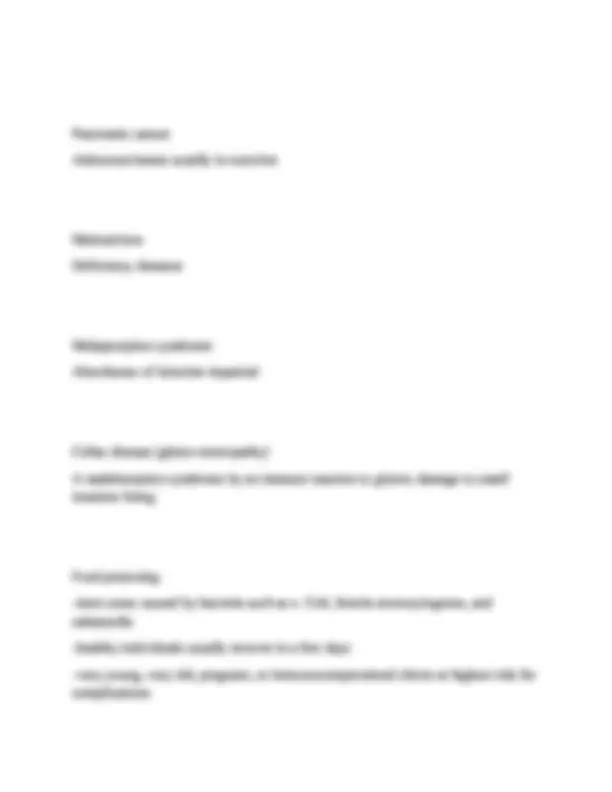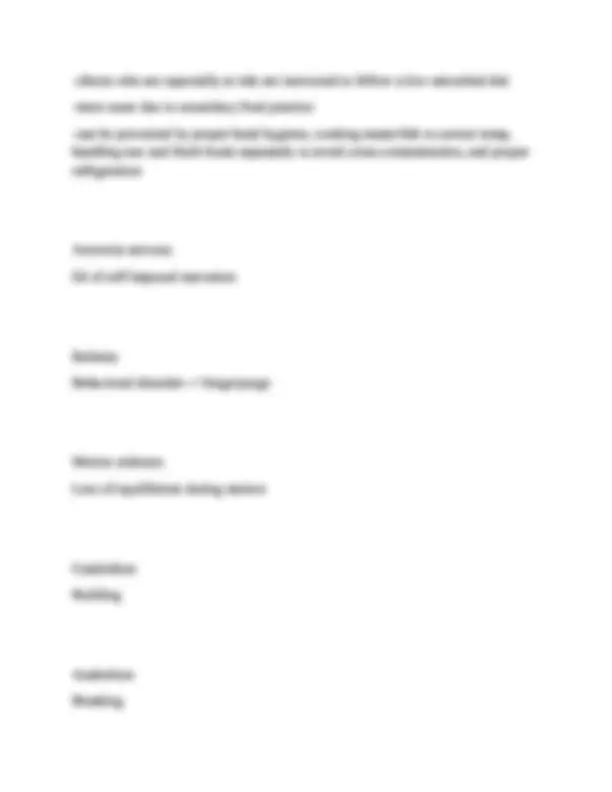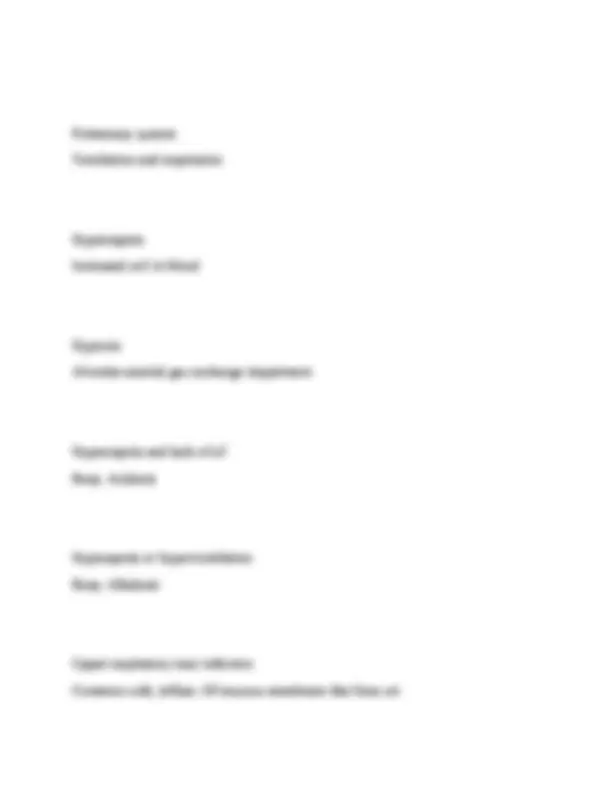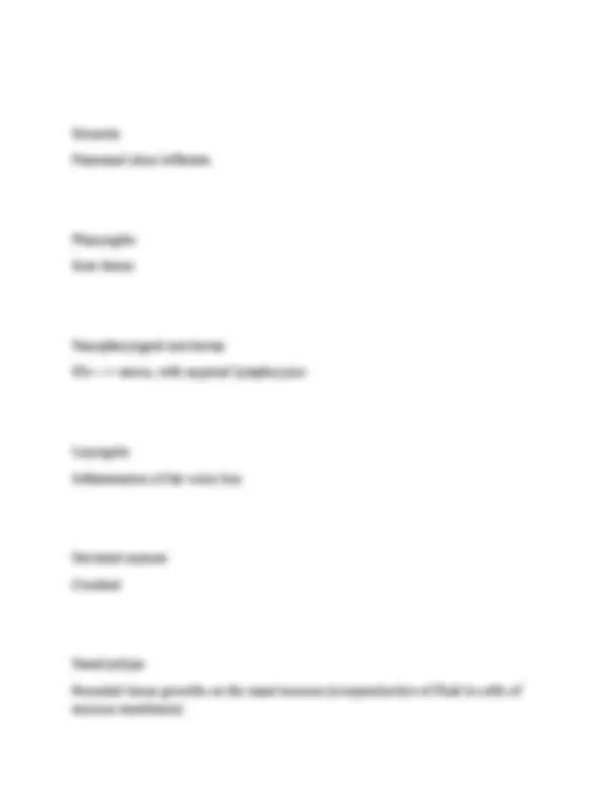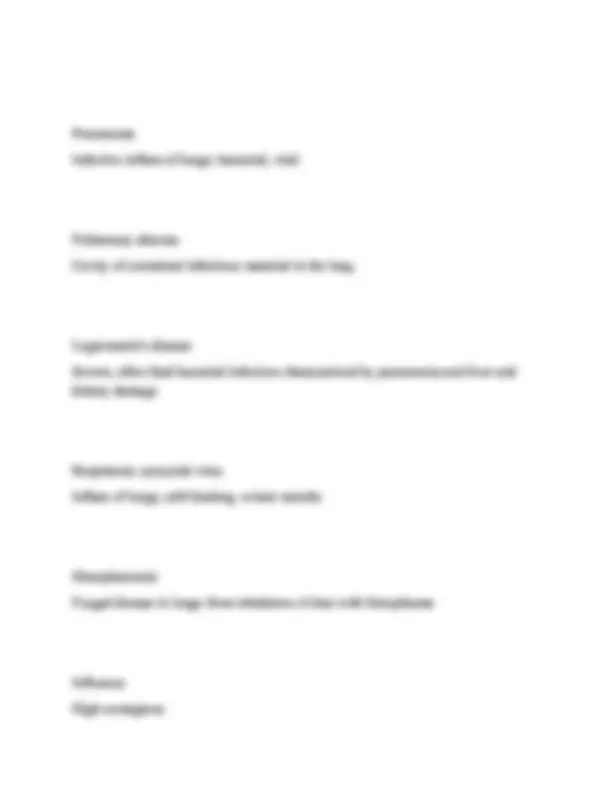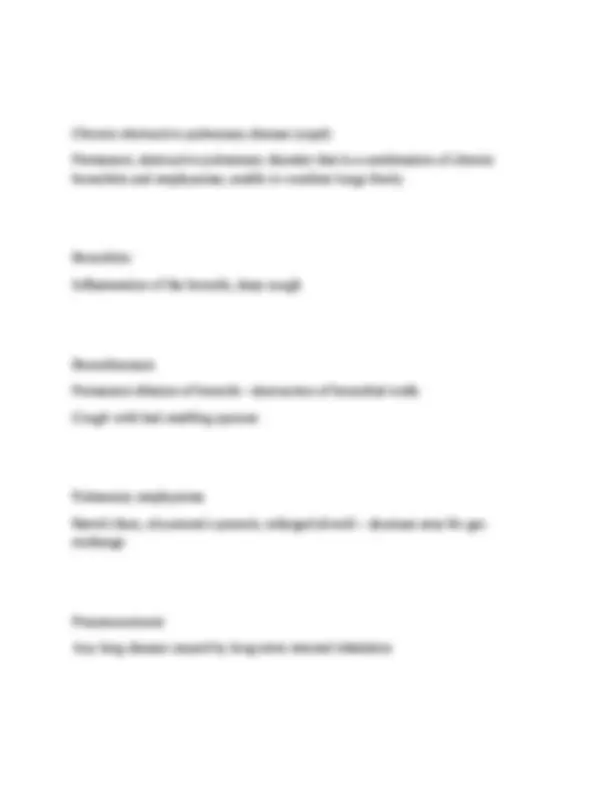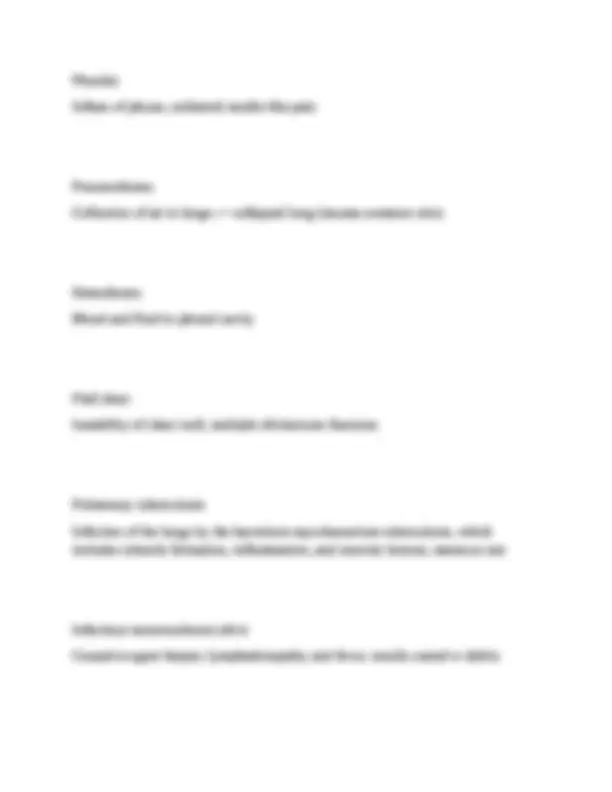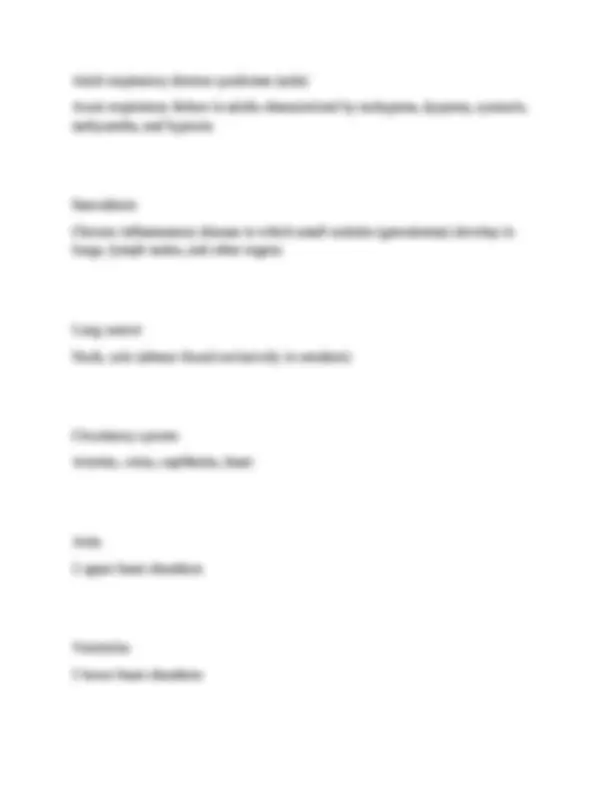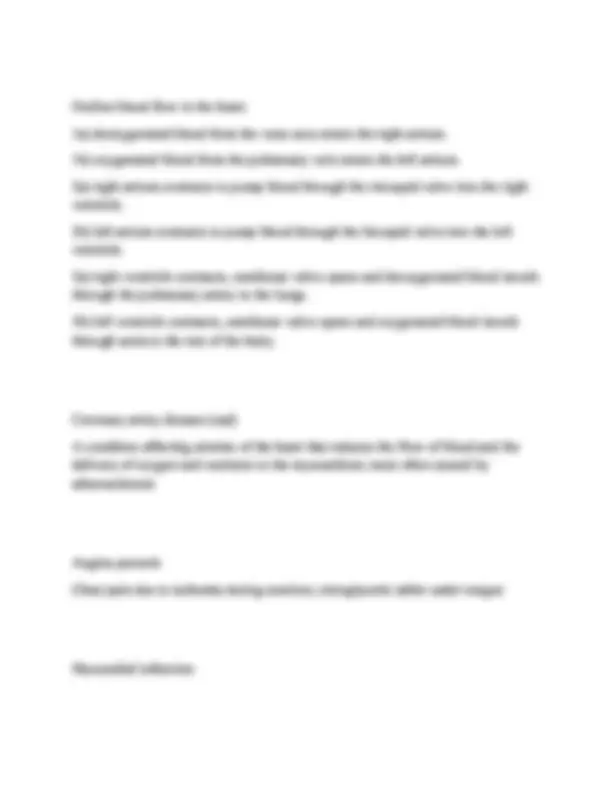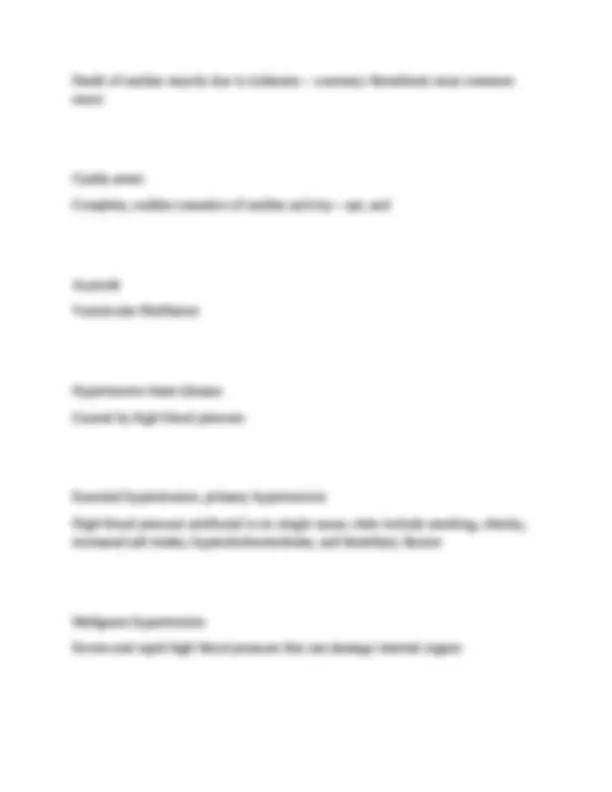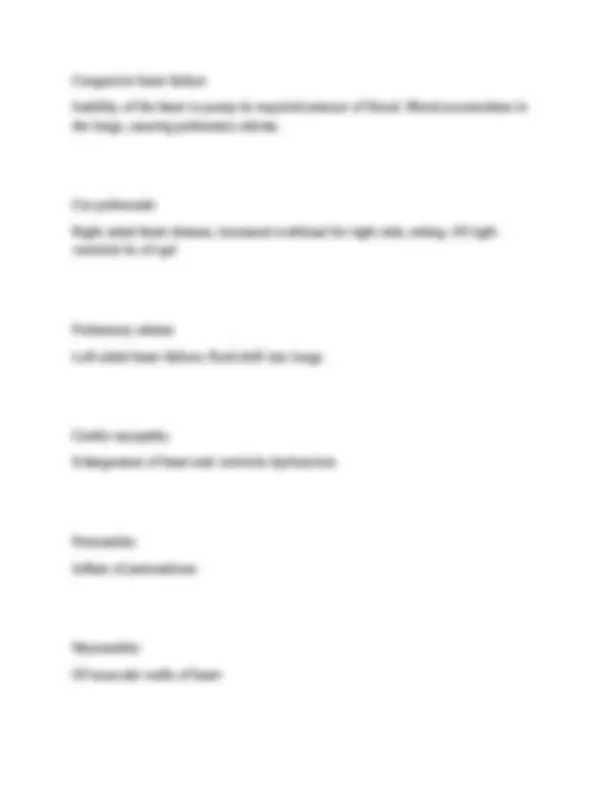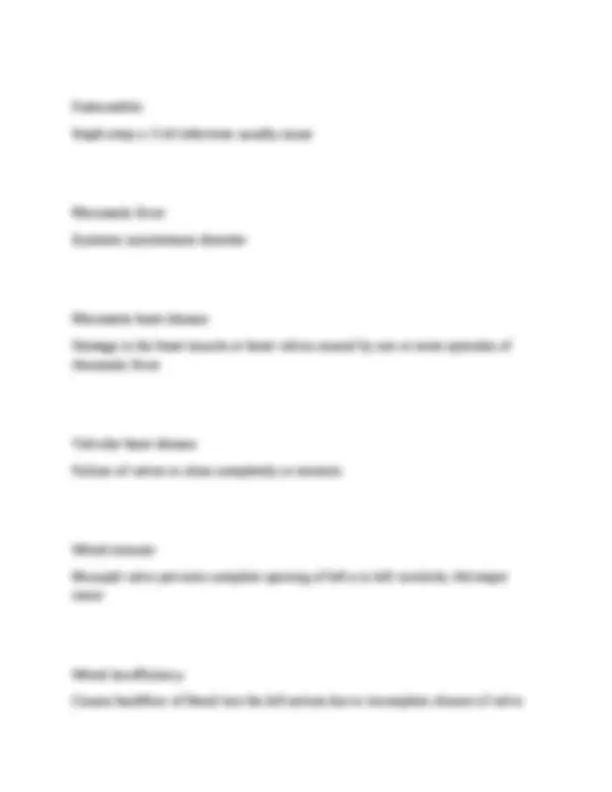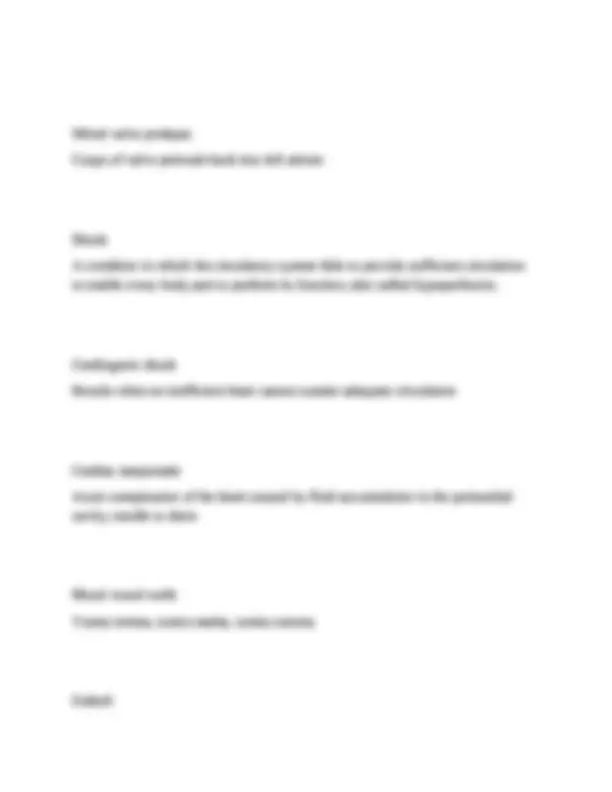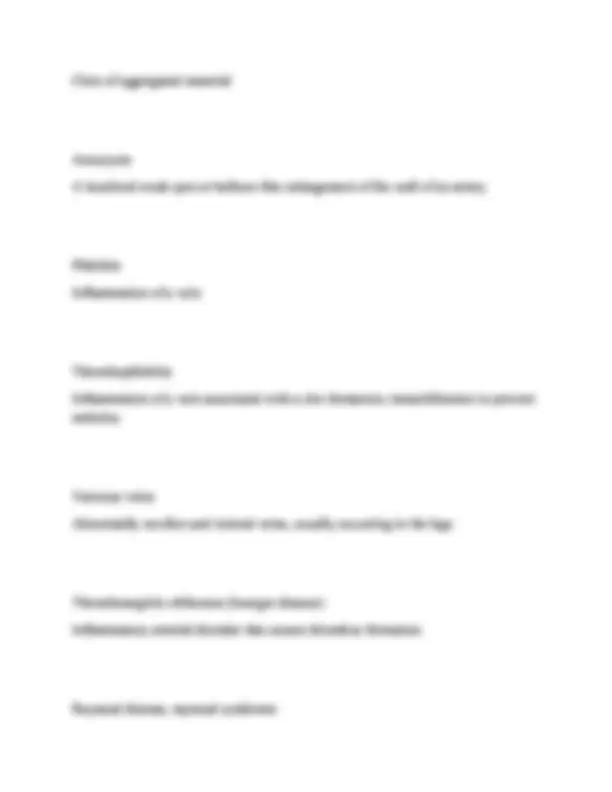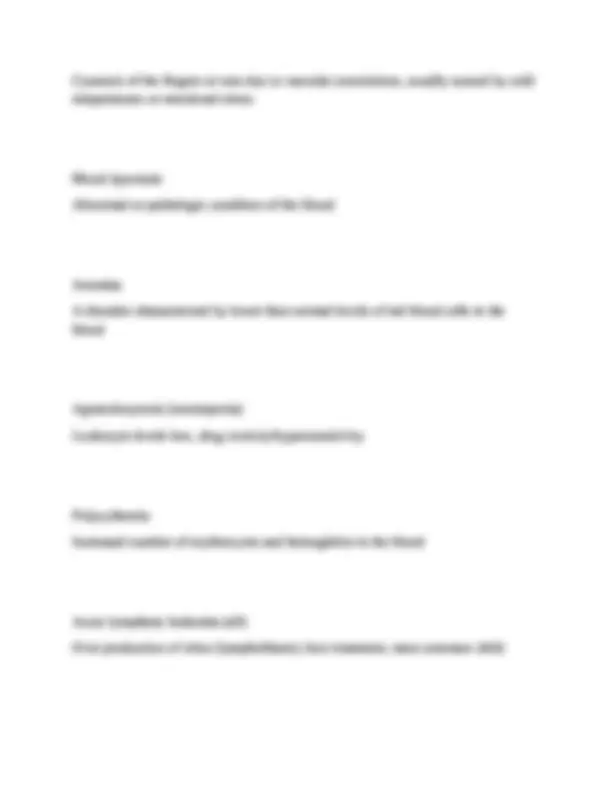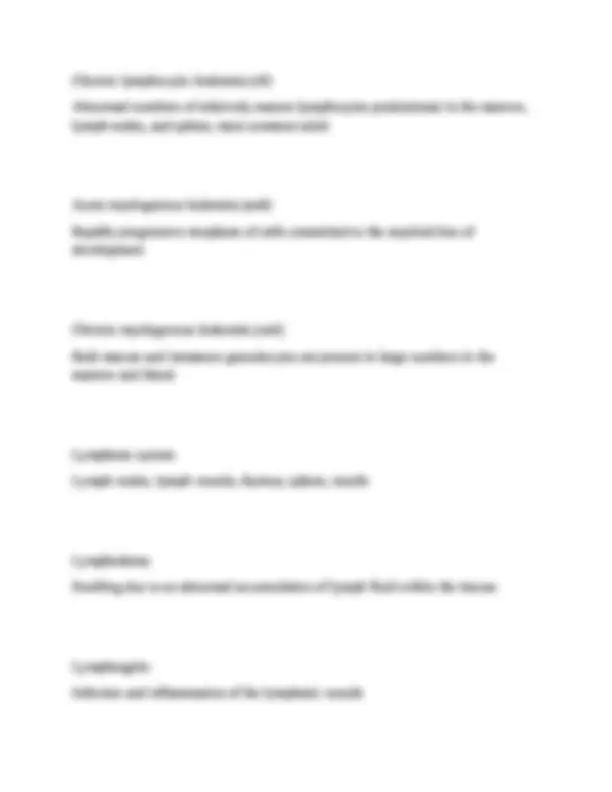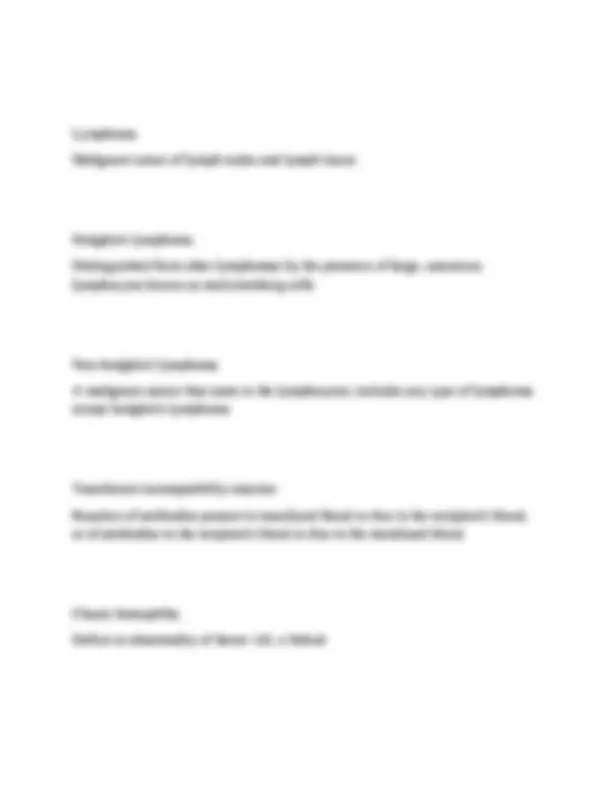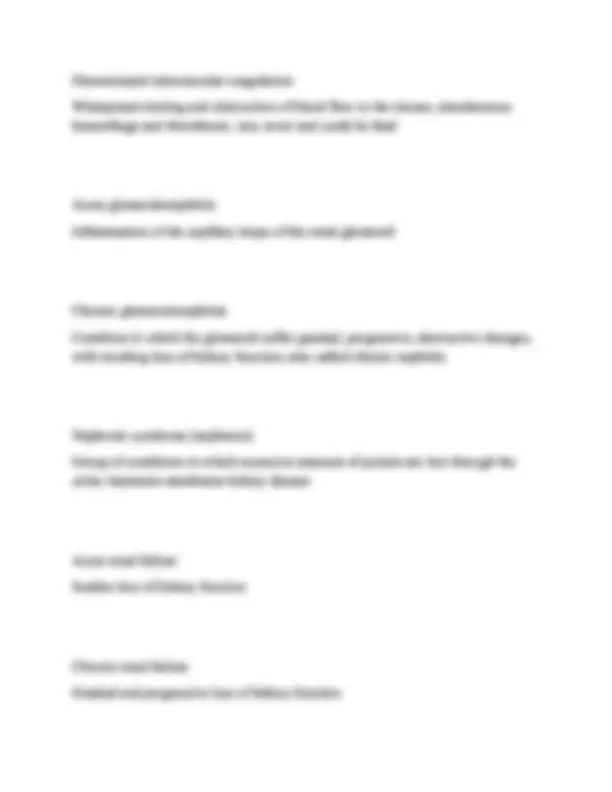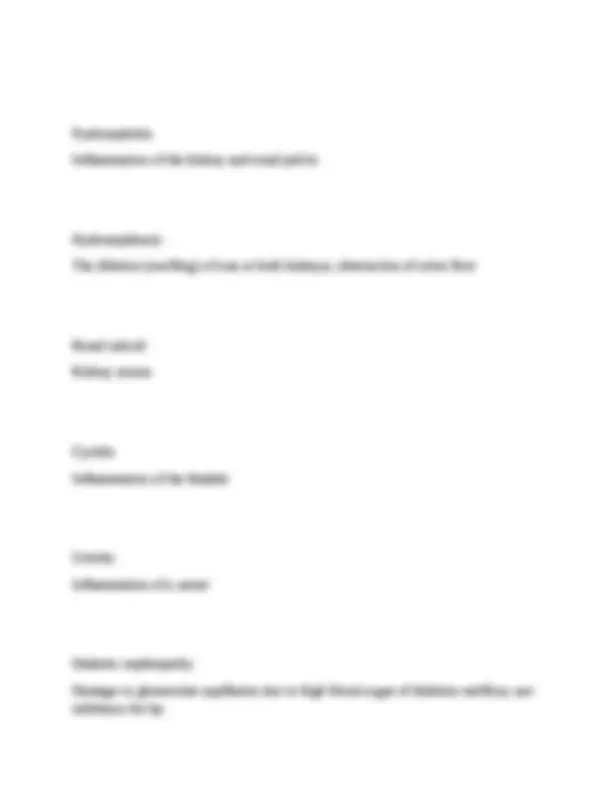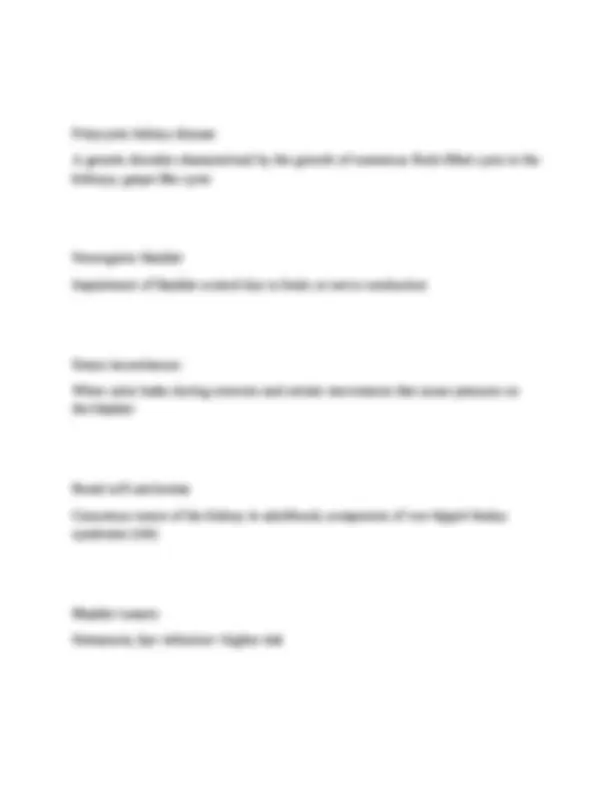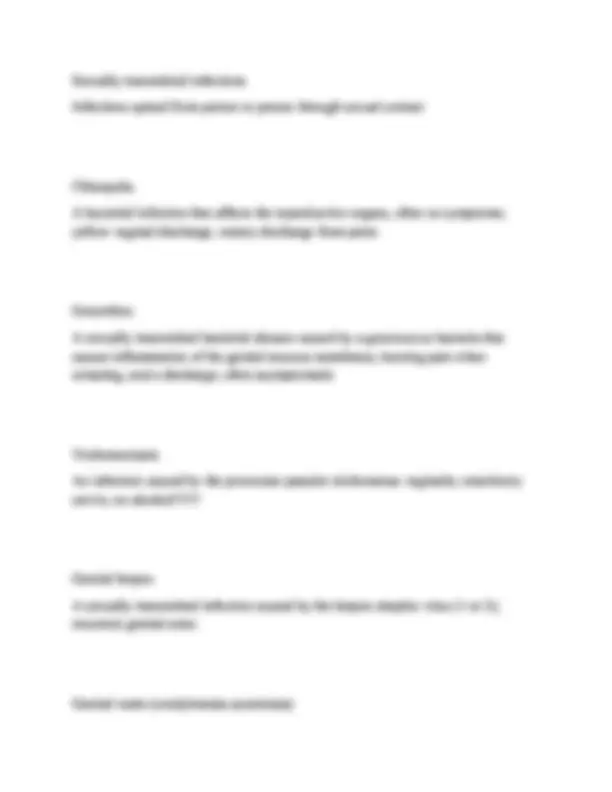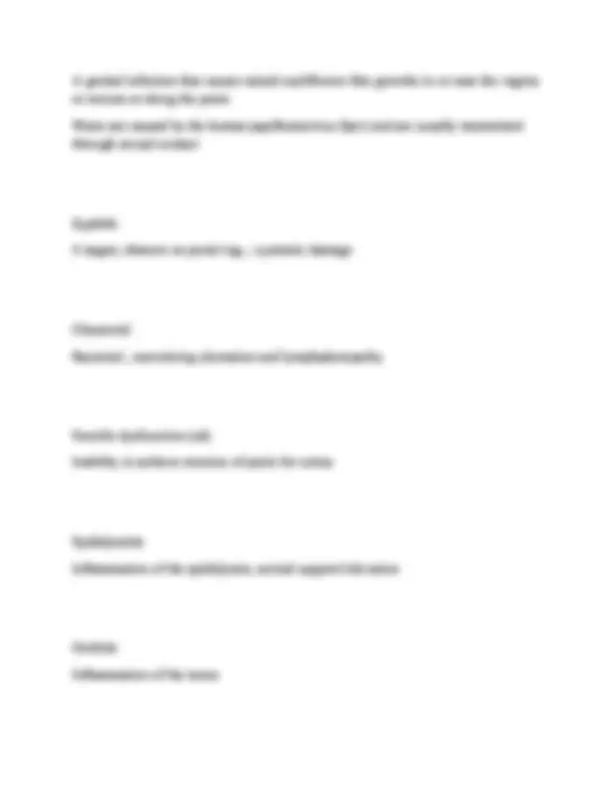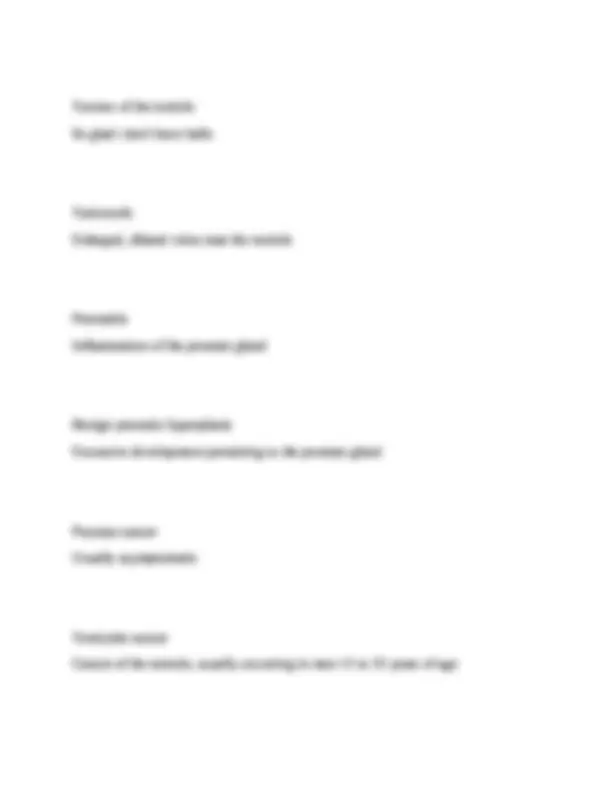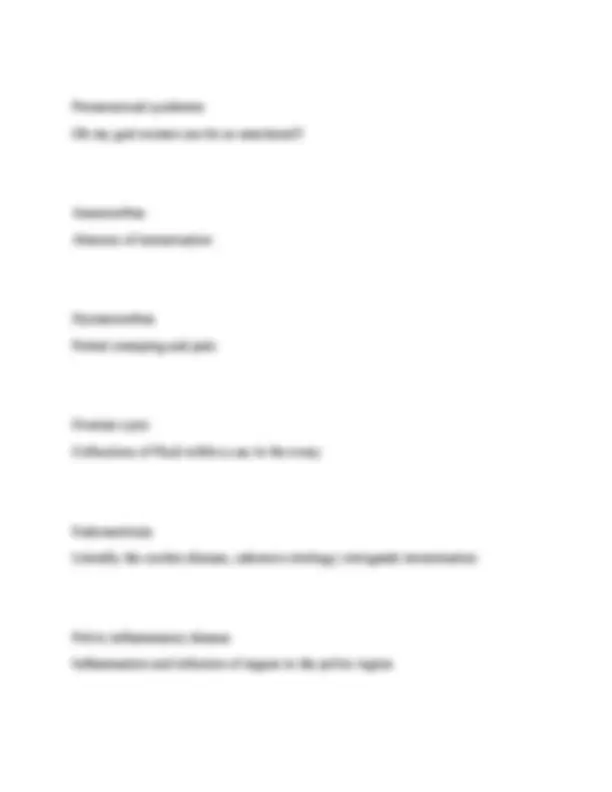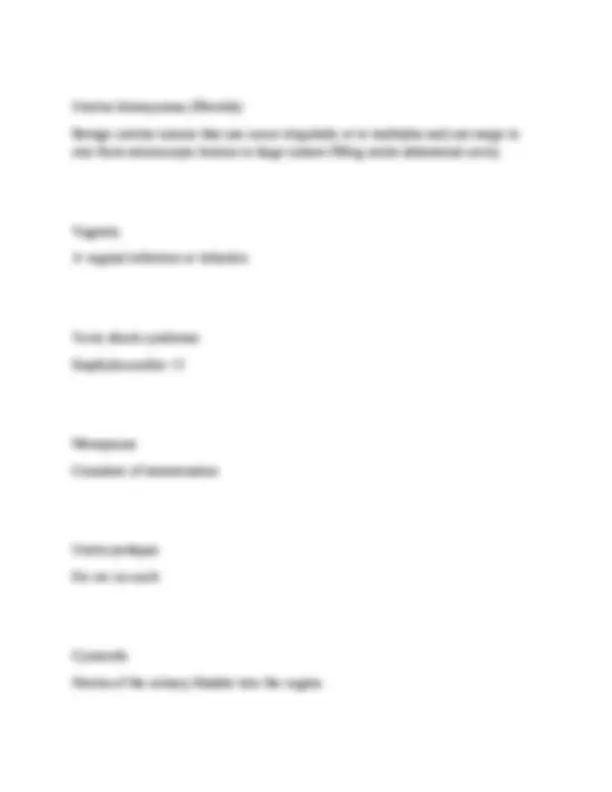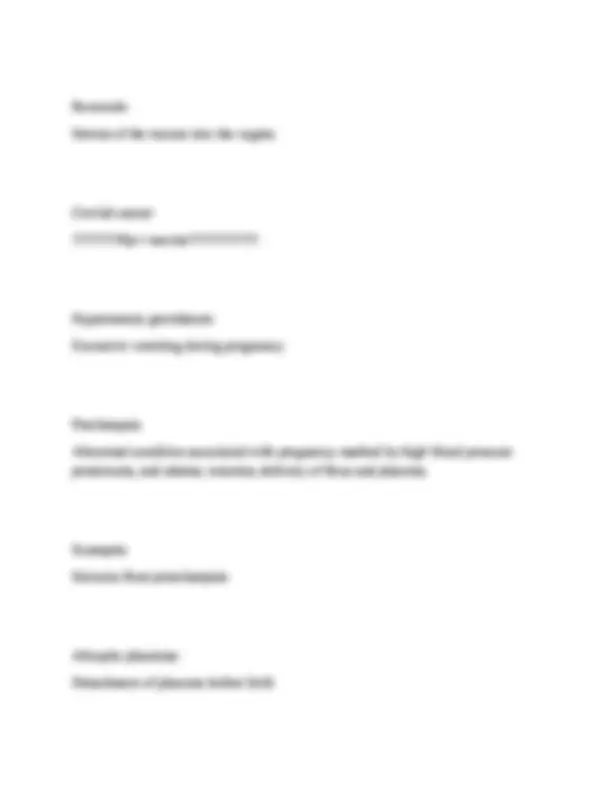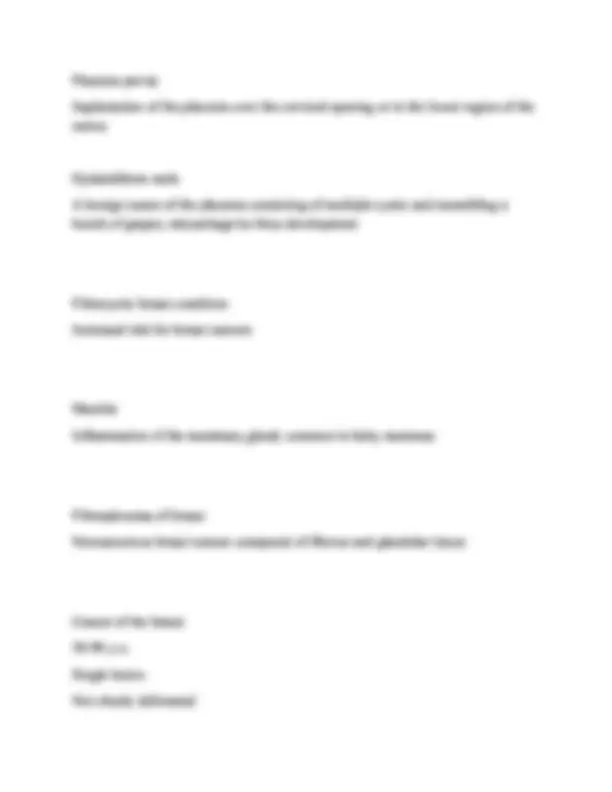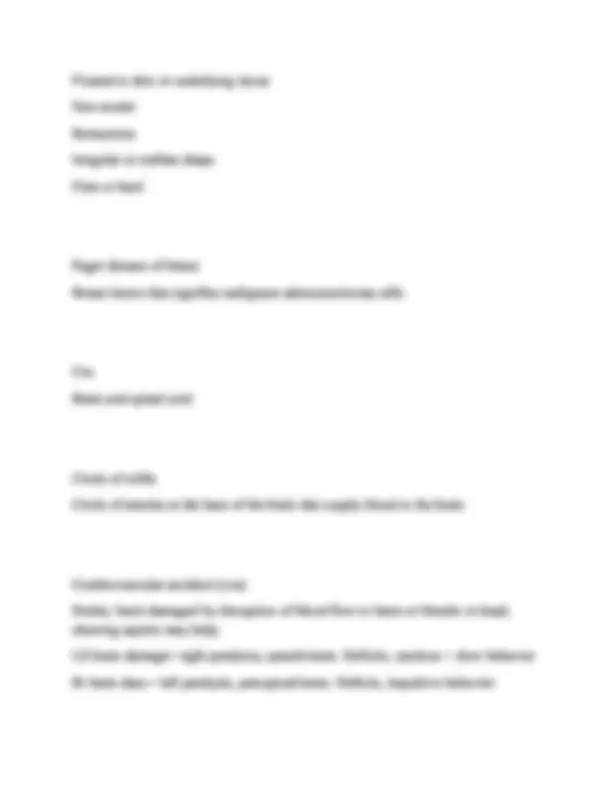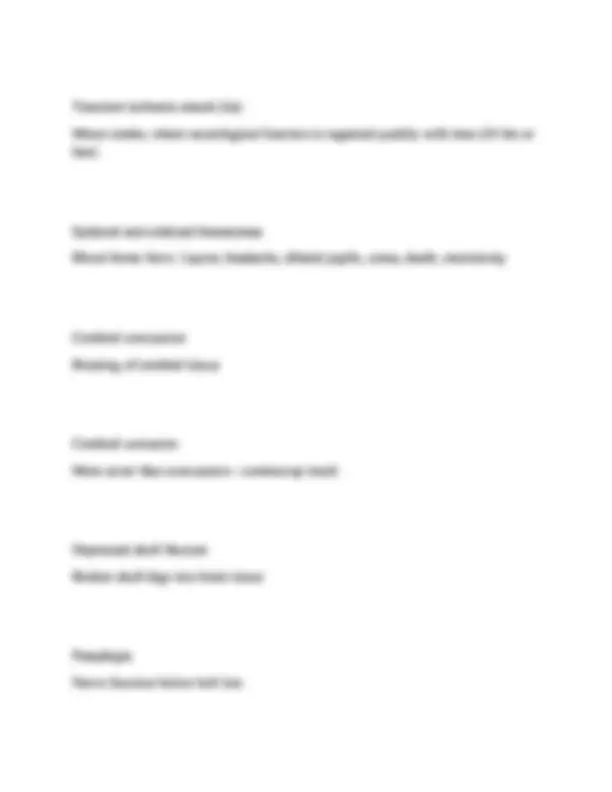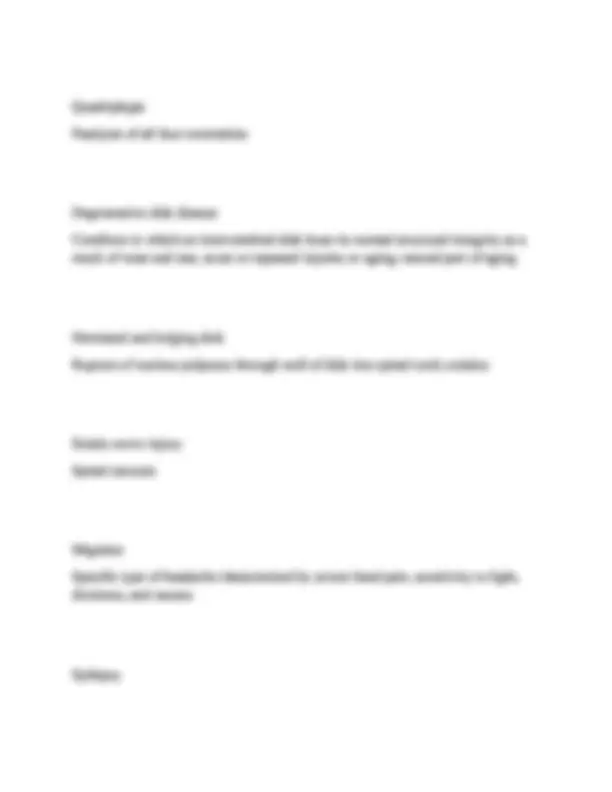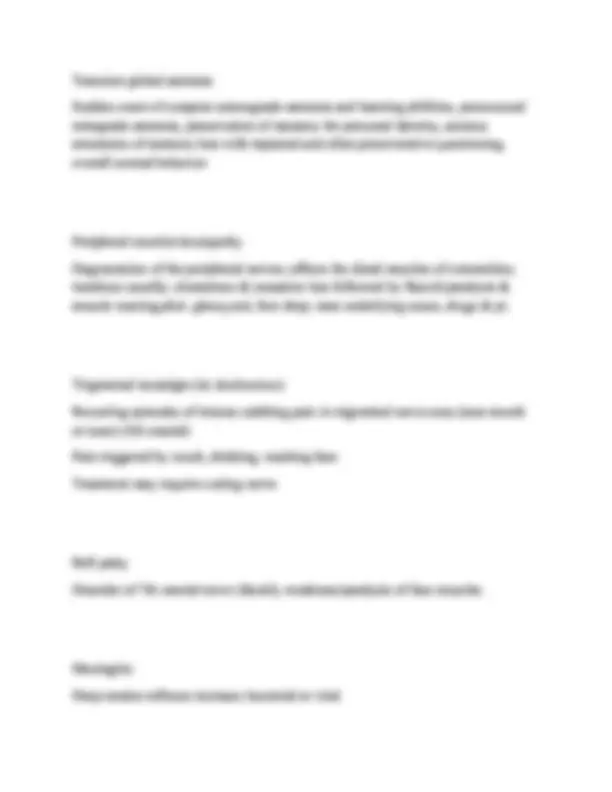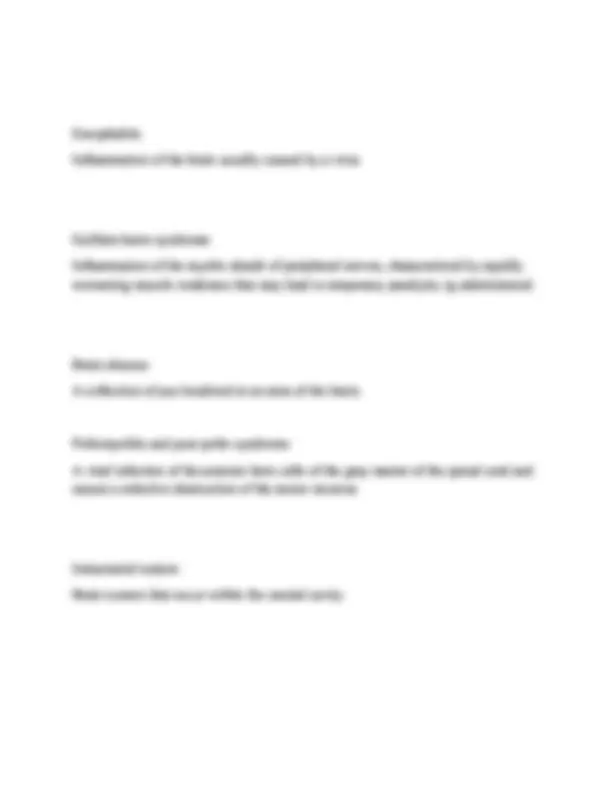Partial preview of the text
Download PATHOPHYSIOLOGY HOSA ALL DISEASES QUESTIONS WITH CORRECT AND VERIFIED ANSWERS 2025-2026. and more Exams Nursing in PDF only on Docsity!
GRADED. What are the major glands of the endocrine system? Hypothalamus, pineal, pituitary, parathyroids, thyroid, thymus, adrenals, pancreatic islets, ovaries/testes What are tropic/-tropin hormones? Hormones that stimulate secretions of other hormones What causes endocrine diseases? Increased or decreased secretions of hormones What are two blood tests that can be used to detect hormone levels? Radioimmunoassay (ria) or immunometric assay (ima) What does the anterior pituitary do? Secretes growth hormone (gh), fsh (follicle stimulating), Ih (lutineizing), prl (prolactin) What does the posterior pituitary do? Secretes vasopressin (water absorption in renal) and oxytocin (uterine contractions) What does the thyroid do? Secretes t4 (thyroxine) which is responsible for regulating the rate of cell metabolism What does the parathyroid gland do? Secretion of pth--regulates calcium levels in the blood (controls calcium metabolism) What does the adrenal cortex secrete? Me, ge (-oids) (retention of water, metabolism of carbs, secondary sex characteristics What does the adrenal medulla secrete? Epinephrine-- "fight or flight", increases bp, hr, and glucose level What does the pancreas secrete? Insulin (regulates metabolism of glucose-- proper blood glucose levels) and glucagon (causes glucagon--> glucose) Hypersecretion of pituitary hormones; condition of adults (happens after puberty/epiphyseal already occurred) meaning overgrowth is just in face, hands, feet//soft tissue; pituitary tumor or adenoma, surgery (transsphenoidal approach), radiation, medication Dwarfism Congenital hyposecretion of growth hormone; hypopituitary dwarfism in children; congenital, tumor, hemorrhage after birth; somatropin (hgh) administered until child reaches 5 ft (dwarfism= 4 foot, 10 inches) Diabetes insipudus (di) Disturbance of water metabolism--> polydipsia (extreme thirst), polyuria (dilute urine), dehydration Deficiency in release of vasopressin, posterior pituitary gland Distal tubes of kidney fail to reabsorb water from filtrate back into bloodstream Vasopressin injections, nasal sprays, ddap True or false: the thyroid most often produces pathology True!! Simple goiter Enlargement of thyroid gland; swelling at neck, hyperplasia, presses on esophagus and trachea; shortage of iodine in diet, causing pituitary to secrete more tsh-- thyrotropin Homeostasis Internal stability Mrsa Bad news; infects hospitals, jails, etc. Aggressive skin and soft tissue infections, fatal complications; antibiotic resistance Vre Resistant bacterial infection Cre High level resistance to last resort antibiotics Anaplastic Variable in appearance and disorderly Prostate cancer diagnostic test Gleason grade scale (based upon high/low-grade cell involvement) Uticaria Hives Epistaxis Nosebleed Exposure to allergens Allergen exposure-- antigen--ige antibodies attach to mast cell in plasma--when same antigen enters--ige antibodies bind--> triggers release of histamine from mast cells-- allergic response Prematurity Birth before the 37th gestational week; causes many complications in infant; could be resulted from bicornate uterus, hostile environment, stress//trauma, history of miscarriages; etc. Irds Infant respiratory distress syndrome Acute hypoxemia-->infiltrates within alveoli Resp. Distress, cyanosis Lungs of neonate lack surfactant vital to expansion Bpd Bronchopulmonary dysplasia; chronic lung disease as result of insult to lungs; stiff lungs, hard to ventilate; pressure and oxygen damage lung tissue; own-replacement of alveoli tissue, 02 therapy, diuretics Retinopathy of prematurity Incomplete vascularization of retina; resolves on its own Necrotizing enterocolitis Inflamm. Process; ischemic necrosis of mucosal lining of intestinal tract; distention, feeding intolerance, emesis; normal flora invade mucosa; feeding stopped and iv Robinow syndrome A condition of small stature and related incidence of interorbital distance, bulging forehead, depressed nasal bridge, malaligned teeth, and short limbs. (could lead to other issues) Muscular dystrophy Degenerative disease of muscles; muscles atrophy-- replaced with fat; caused by absence of dystrophin, protein essential for muscles; only males; no cure or successful treatment Spina bifida Group of spinal cord defects; exposure to radioactivity during gestation, and//or lack of folic acid. Agent orange exposure Spina bifida occulta Most common and least severe form of spina bifida without protrusion of the spinal cord or meninges Meningocele Protrusion of the meninges Myelomeningocele Most severe form of spina bifida in which the spinal cord and meninges protrude through the spine Hydrocephalus Pressure in brain increase, “csf, circulation blocked; trauma/infection w meningitis, blood clot; place shunt Anencephaly Defect in closure of the cephalic portion of the neural tube that results in incomplete development of the brain and bones of the skull; the most drastic neural tube defect usually results in a stillbirth Acyanotic Has abnormal circulation; however, all blood entering the systemic circulation is oxygenated; major risk=congestive heart failure Cyanotic heart defects Blood mixes; hypoxia + cyanosis= greatest concern Ventricular septal defect (vsd) A hole in the ventricular septum that causes blood to mix between the rv and lv; murmur loudest when small defect Patent ductus arteriosus Immediate surgery and heart failure//cyanosis Clubfoot (talipes equinovarus) A birth defect in which the foot is twisted out of shape or position. Ddh (developmental dysplasia of the hip) Common in females; pt and splints usually; positive ortolani and barrow maneuvers Cleft lip and palate Multifactorial genetic disorder Cryptorchidism Undescended testes Wilms tumor (nephroblastoma) Kidney; highly malignant, hematuria, pain, vomit; adenosarcoma from irregular fetal kidney tissue left behind; tends to metastasize Phimosis Stenosis of opening of foreskin Congenital pyloric stenosis Bile-colored emesis, projectile vomit; pyloromyotomy Hirschsprung disease (congenital aganglionic megacolon) Impairement of intestinal motility; innervation of muscles in bowel wall (parasympathetic nerve ganglion cells missing in portion); temporary colostomy and incision Cystic fibrosis (cf) Hereditary disorder; excess mucous production that block glandular ducts; increased salt in sweat Phenylketonuria (pku) Error in metabolism of amino acid phenylalanine; enzyme needed to turn aa into tyrosine missing-- toxin accumulates in blood and urine; phenylamine-free diet Klinefelter syndrome Xxy; hypogonadism, nondisjunction Measles (rubeola) Viral; coryza, cough, conjunctivitis, rash w/ koplik spots, photophobia Rubella (german measles) A highly contagious viral disease, especially affecting children, that causes swelling of the lymph glands and a reddish pink rash; may be harmful to the unborn baby of a pregnant woman who contracts it; shorter course than measles (3- day measles) Tetanus Systemic infection; lock jaw; contraction of skeletal muscles Influenza Viral Common cold Usually self-limiting Sudden infant death syndrome (sids) A condition that occurs when an infant stops breathing, usually during the night, and suddenly dies without an apparent cause Croup Viral severe inflamm and obstruction of resp tract, high pitch cough, stridor Epiglottitis Kids 3-7 years Acute tonsillitis Penicillin after diagnosis Adenoid hyperplasia Enlargement of the lymphatic tissue causing partial breathing blockage. Asthma A chronic allergic disorder characterized by episodes of severe breathing difficulty, coughing, and wheezing. Pulmonary function test Leukemia Cancer of white blood cells; all (most common) and aml (poorer prognosis; myelogenous) ; bmt and chemo Erythroblastosis fetalis Rh factor incompatibility btwn mother and fetus; coombs test Lead poisoning Blood toxicity via ingestion; chelating agents if bad Reye syndrome Combination of symptoms including acute encephalopathy and damage to organ, especially the liver caused by children under 15 taking aspirin with a viral infection; disruption in urea cycle Fetal alcohol syndrome A lot of issues; don't do it Diaper rash Contact dermatitis Neuroblastoma Cancer of sns--> primitive sympathetic ganglion cells; periorbital ecchymosis Tissues of the immune system Thymus, bone marrow, tonsils, adenoids, spleen, peyer patches, appendix, lymph nodes, vascular system Inaproppiate immune responses Hyperactivity (allergies), immunodeficiency disorders, autoimmune disorders, attack to beneficial foreign tissues (organ transplantation); to treat: do not give immunosupressive agents, corticosteroids, or live vaccines T-cells Cell-mediated immunity- viral, fungal infections protection B-cells Antibody-mediated immunity- bacterial infection protection 
